Sunday, December 9, 2012
Wednesday, November 21, 2012
The Sight of Silence
So what's next?
Well, that would be me finally giving some attention to photos I took in recent months. Since yeah, this did start out as a photo blog. Some readers and viewers might be contemplating suicide by now, after being confronted with all this nerd talk, so maybe time for some images...
Also, I have to go back on a promise - which I don't like doing in general - but a port of DNGMonochrome to OS X will have to wait until I settle down a bit with experimenting. I have too much stuff I want to try out in the current version, before I can set myself to the quite boring and time consuming task of translating code, ending up with basically nothing new...
I am however looking into ways of restructuring the code I have now, to make the core more portable. Then only the user interface would have to be redone.
Where DNGMonochrome is concerned, I will be concentrating next on the algorithms and noise.
Algorithms
The aim was to get what I have now into only one algorithm: retaining the sharpness of the sharpest, but with less to no artifacts.
Currently I'm testing a new algorithm that comes very close.
It's faster than what I have now, it's sharper than the 'smooth' algorithm, and it's without any of the artifacts the current sharp algorithms can produce. No speckles on high ISO, no ringing on highlighted edges, nicely stepped diagonals with no pixels misbehaving...
It's close to what I want... it was just not as sharp as the sharpest I have now.
But after some tuning, I managed to solve that with an extra setting, optionally changing the innards of the algorithm slightly.
Overall it means going to only one algorithm with one extra option for sharpness, ditching three separate algorithms, ditching the mixover and the quality slider, gaining speed and basically improving the conversion, since the new algorithm doesn't misbehave and is still sharper than the current smooth one.
And with the extra option you can still get to gritty, noisy and sharper.
In both cases (with or without the sharper option) the algorithm produces sharper results than Lightroom turned B&W.
I still need to run some tests on this new stuff, and see if it also works out for the RAW red and the RAW blue, but if it does, it will most likely be in the next release.
Noise
At present, the noise reduction offered in DNGMonochrome is kinda lame.
Now the assumption was that 'lame' was actually okay, because the monochrome DNG is not your finished result: Lightroom or any other RAW converter you use can take care of the noise. I threw in those crusty median filters because I had experimented with them and they actually worked, so why not... but they are not very sophisticated...
But in the latest version I introduced RGB filtering: the red and blue interpolated results are mixed in with the regular result, so noisy pixels (especially the red channel can be quite messy) are introduced into the regular result if you use those filters.
To be able to perform good solid noise reduction on the RAW red and RAW blue, before they are used in the filtering, would be a very welcome addition.
Now, when you google 'noise reduction' it's almost inescapable: it needs to be wavelets.
Wavelets?
Yes, wavelets.
Fourier transforms are also possible, but that seems to be yesterday's thing: wavelets are the way to go... (also not very recent mind you, but it's what all the kids rave about: wavelets!).
I had no clue... that's the fun of DNGMonochrome (for me that is). When I started it I had even less of a clue. It forces me to dive deeper and deeper, learning heaps of new stuff.
Pointless really, but it keeps me busy.
After reading up on wavelets, I finally had some vague idea of what they were, but it was still very abstract all.
Then I stumbled onto a piece of programming code, something practical, that represented 'wavelet denoising'... (dcraw, great program, not easy to read the source code, but at least that I'm capable of)...
So I grabbed that code - really not a lot of lines, strange: after reading many thick PDF on the theory of wavelets, one would expect some bulky programming code, but not so... and started to experiment with it.
Insight
I first adapted it to actually show me these mysterious 'wavelets' (or at least their consequences) and then I really started to understand (well, sort of...)
Then it took me a while to get it adapted to work with DNGMonochrome, and when it finally did: bingo.
The Sight of Silence
Impressive noise reduction.
No joke: seriously impressive noise reduction.
In comparison with Lightroom (3.6) one might even claim - on very very close inspection - that the wavelets rule: they seem to deal slightly better with fine detail (although I can't exclude Lightroom also using a wavelet technique: the results are remarkably similar - and when you throw in the detail slider in Lightroom, the difference becomes neglectable).
Getting philosophical
Of course 'good' and 'better' become very relative, because almost none of these differences are visible at 100%. This whole quality thing is really about extreme pixel peeping, under the assumption that if it's better at 800% magnification, it must also be better at 100%. Which in itself is true of course (is it?), but it excludes the notion: can we still see it?
Or on a more philosophical note: is better still better if we can't experience the difference?
Anyway...
Improvements?
After reworking this wavelet code a bit (adding an extra 'detail' setting and getting it more in line with my own programming), and reading some more on wavelets, I saw some concerns in the present code I'd like to address.
For instance: wavelets operate with thresholds. But the basic threshold in the present code is fixed per level and it's not documented where this threshold is coming from. There's suggested ways to determine the threshold dynamically and not set it upfront, so I want to have a look at that.
Also, the number of decomposition levels is fixed (how many wavelets are created in total), where it might be better to have a high number of levels for low ISO photos, and lower levels for high ISO photos. Need to examine that, see if I can detect a difference when changing the number of levels.
And I read about possible optimization steps after the denoising, for getting back lost detail, so I also need to examine that one.
So, enough to do for a next release...
Well, that would be me finally giving some attention to photos I took in recent months. Since yeah, this did start out as a photo blog. Some readers and viewers might be contemplating suicide by now, after being confronted with all this nerd talk, so maybe time for some images...
Also, I have to go back on a promise - which I don't like doing in general - but a port of DNGMonochrome to OS X will have to wait until I settle down a bit with experimenting. I have too much stuff I want to try out in the current version, before I can set myself to the quite boring and time consuming task of translating code, ending up with basically nothing new...
I am however looking into ways of restructuring the code I have now, to make the core more portable. Then only the user interface would have to be redone.
Where DNGMonochrome is concerned, I will be concentrating next on the algorithms and noise.
Algorithms
The aim was to get what I have now into only one algorithm: retaining the sharpness of the sharpest, but with less to no artifacts.
Currently I'm testing a new algorithm that comes very close.
It's faster than what I have now, it's sharper than the 'smooth' algorithm, and it's without any of the artifacts the current sharp algorithms can produce. No speckles on high ISO, no ringing on highlighted edges, nicely stepped diagonals with no pixels misbehaving...
It's close to what I want... it was just not as sharp as the sharpest I have now.
But after some tuning, I managed to solve that with an extra setting, optionally changing the innards of the algorithm slightly.
Overall it means going to only one algorithm with one extra option for sharpness, ditching three separate algorithms, ditching the mixover and the quality slider, gaining speed and basically improving the conversion, since the new algorithm doesn't misbehave and is still sharper than the current smooth one.
And with the extra option you can still get to gritty, noisy and sharper.
In both cases (with or without the sharper option) the algorithm produces sharper results than Lightroom turned B&W.
I still need to run some tests on this new stuff, and see if it also works out for the RAW red and the RAW blue, but if it does, it will most likely be in the next release.
Noise
At present, the noise reduction offered in DNGMonochrome is kinda lame.
Now the assumption was that 'lame' was actually okay, because the monochrome DNG is not your finished result: Lightroom or any other RAW converter you use can take care of the noise. I threw in those crusty median filters because I had experimented with them and they actually worked, so why not... but they are not very sophisticated...
But in the latest version I introduced RGB filtering: the red and blue interpolated results are mixed in with the regular result, so noisy pixels (especially the red channel can be quite messy) are introduced into the regular result if you use those filters.
To be able to perform good solid noise reduction on the RAW red and RAW blue, before they are used in the filtering, would be a very welcome addition.
Now, when you google 'noise reduction' it's almost inescapable: it needs to be wavelets.
Wavelets?
Yes, wavelets.
Fourier transforms are also possible, but that seems to be yesterday's thing: wavelets are the way to go... (also not very recent mind you, but it's what all the kids rave about: wavelets!).
I had no clue... that's the fun of DNGMonochrome (for me that is). When I started it I had even less of a clue. It forces me to dive deeper and deeper, learning heaps of new stuff.
Pointless really, but it keeps me busy.
After reading up on wavelets, I finally had some vague idea of what they were, but it was still very abstract all.
Then I stumbled onto a piece of programming code, something practical, that represented 'wavelet denoising'... (dcraw, great program, not easy to read the source code, but at least that I'm capable of)...
So I grabbed that code - really not a lot of lines, strange: after reading many thick PDF on the theory of wavelets, one would expect some bulky programming code, but not so... and started to experiment with it.
Insight
I first adapted it to actually show me these mysterious 'wavelets' (or at least their consequences) and then I really started to understand (well, sort of...)
Then it took me a while to get it adapted to work with DNGMonochrome, and when it finally did: bingo.
The Sight of Silence
Impressive noise reduction.
No joke: seriously impressive noise reduction.
In comparison with Lightroom (3.6) one might even claim - on very very close inspection - that the wavelets rule: they seem to deal slightly better with fine detail (although I can't exclude Lightroom also using a wavelet technique: the results are remarkably similar - and when you throw in the detail slider in Lightroom, the difference becomes neglectable).
Getting philosophical
Of course 'good' and 'better' become very relative, because almost none of these differences are visible at 100%. This whole quality thing is really about extreme pixel peeping, under the assumption that if it's better at 800% magnification, it must also be better at 100%. Which in itself is true of course (is it?), but it excludes the notion: can we still see it?
Or on a more philosophical note: is better still better if we can't experience the difference?
Anyway...
Improvements?
After reworking this wavelet code a bit (adding an extra 'detail' setting and getting it more in line with my own programming), and reading some more on wavelets, I saw some concerns in the present code I'd like to address.
For instance: wavelets operate with thresholds. But the basic threshold in the present code is fixed per level and it's not documented where this threshold is coming from. There's suggested ways to determine the threshold dynamically and not set it upfront, so I want to have a look at that.
Also, the number of decomposition levels is fixed (how many wavelets are created in total), where it might be better to have a high number of levels for low ISO photos, and lower levels for high ISO photos. Need to examine that, see if I can detect a difference when changing the number of levels.
And I read about possible optimization steps after the denoising, for getting back lost detail, so I also need to examine that one.
So, enough to do for a next release...
Labels:
DNGMonochrome
Monday, November 19, 2012
DNGMonochrome 0.9.6 beta released
Ok, finally...
It's a release with quite a bit of new stuff, so I do expect bugs. Check back soon.
Here are all the changes...
Bug fixes
Changes
New stuff
Dropped stuff
Extra documentation
More on the new 'dead pixel mapper' and how to work it here.
More on the new white balance slider and what it does here.
Download
You can download the new version of DNGMonochrome here.
It's a release with quite a bit of new stuff, so I do expect bugs. Check back soon.
Here are all the changes...
Bug fixes
- Fixes bug that on rare occasions could lead to a checkerboard pattern on blown out highlights... it's very unlikely that any of your converted photos were affected by this bug
- Fixes bug which could lead to a crash when pressing the Cancel button on a running blue filtered process
Changes
- Changes the strength setting from steps of 25% to steps of 5%
- Changes the filter options to a drop down list
- Changes the file naming... filename will now indicate the type of filter (RAW or RGB), the filter used (color), and the strength setting of the filter
New stuff
- Adds a red, green and blue filter to the filter options
- Adds option to change the white balance of the photo before filtering (on RGB filters only)
- Adds option to use the RGB filters as a gradient in four directions, with options to end the gradient anywhere on the photo
- Adds option to boost the strength of the RGB filters when using the filters as gradient
- Adds dead pixel functionality, to register dead pixels per camera
- Adds quality option to fix registered dead pixels in the monochrome DNG
Dropped stuff
- Due to the fact the working of the new red RGB filter is slightly similar to the working of the RAW red filter on a non-full strength (same for the new RGB blue filter versus the RAW blue filter), the strength setting for the RAW filters was dropped
- Internal 8-bit support was dropped (mainly to make it easier to maintain the code)... effectively this means the M8 DNGs and compressed M9 DNGs are decompressed after loading and the resulting monochrome DNG will be written decompressed - 16 bit (making the monochrome DNG file larger for original 8-bit DNGs)
Extra documentation
More on the new 'dead pixel mapper' and how to work it here.
More on the new white balance slider and what it does here.
Download
You can download the new version of DNGMonochrome here.
Labels:
DNGMonochrome
Saturday, November 10, 2012
Filter fun...
That does sound a little bit geeky...
With all the filters almost finished, I thought it would be nice if you could actually apply them selectively... I call it 'gradient filters'. Not very original, the naming, granted, but it describes the working quite well.
They work a bit like the neutral density filter in Lightroom, albeit with a different user interface and quite a different effect.
Here's an example.
Red filtered gradient on only the top 1/3 of the photo.
Move over the photo with your mouse to see the effect...
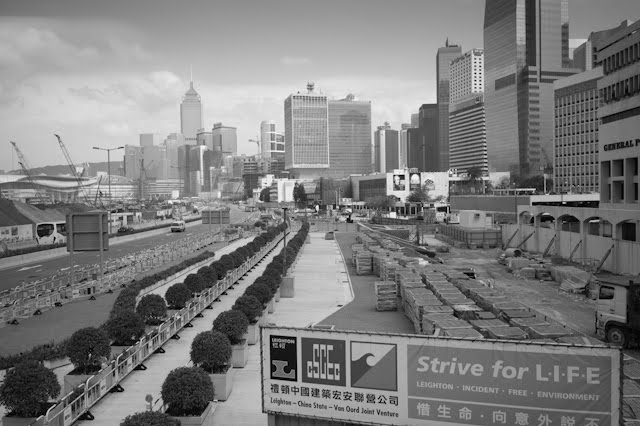
Regular monochrome from Leica M9...
Move over the image to see the gradient red filtered monochrome...
As you can see, it brings out the sky a bit, changes the top of the buildings on the right half, but the bottom half of the photo is completely untouched. It turns the rather flat top half of this image into a little bit more vibrant.
Using the neutral density filter in Lightroom to achieve a similar effect won't work. It will darken the blue of the sky, but also the top of the buildings and the white clouds: in stead of bringing out these details, the density filter would just darken them.
This photo was filtered according to this setting in DNGMonochrome:
You can filter from top to bottom, bottom to top, left to right and right to left (especially handy for images that need to be rotated, since DNGMonochrome doesn't do that for you... I follow the lazy Leica way...). You can then select where the gradient needs to end on the photo, by changing it with the slider. You can apply these gradients in combination with all the RGB color filters (red, green and blue), not just with red (and mind you: the 'gray' gradient you see in the image of the window above, represents one of the three color filters... it's to indicate where the effect will be strongest and where it ends... it's not a 'gray' filter).
I think Photoshop might offer similar functionality, but you can't do this in Lightroom (at least not in 3.6). It would require a neutral density filter type option which can selectively color mix.
This will also be in the next release of DNGMonochrome...
With all the filters almost finished, I thought it would be nice if you could actually apply them selectively... I call it 'gradient filters'. Not very original, the naming, granted, but it describes the working quite well.
They work a bit like the neutral density filter in Lightroom, albeit with a different user interface and quite a different effect.
Here's an example.
Red filtered gradient on only the top 1/3 of the photo.
Move over the photo with your mouse to see the effect...

Regular monochrome from Leica M9...
Move over the image to see the gradient red filtered monochrome...
As you can see, it brings out the sky a bit, changes the top of the buildings on the right half, but the bottom half of the photo is completely untouched. It turns the rather flat top half of this image into a little bit more vibrant.
Using the neutral density filter in Lightroom to achieve a similar effect won't work. It will darken the blue of the sky, but also the top of the buildings and the white clouds: in stead of bringing out these details, the density filter would just darken them.
This photo was filtered according to this setting in DNGMonochrome:
You can filter from top to bottom, bottom to top, left to right and right to left (especially handy for images that need to be rotated, since DNGMonochrome doesn't do that for you... I follow the lazy Leica way...). You can then select where the gradient needs to end on the photo, by changing it with the slider. You can apply these gradients in combination with all the RGB color filters (red, green and blue), not just with red (and mind you: the 'gray' gradient you see in the image of the window above, represents one of the three color filters... it's to indicate where the effect will be strongest and where it ends... it's not a 'gray' filter).
I think Photoshop might offer similar functionality, but you can't do this in Lightroom (at least not in 3.6). It would require a neutral density filter type option which can selectively color mix.
This will also be in the next release of DNGMonochrome...
Labels:
DNGMonochrome
Wednesday, November 7, 2012
Delay...
So, why the delay?
Well, not totally happy with the approach so far, I decided to dive a bit deeper into the process of getting to true sRGB. My YUV theory and the formulas do work (although I now think I'm not officially allowed to call it YUV... the approach works because of the relative relationship between green, red and blue on the sensor - a manufacturer specific YUV if you will...), but seeing how every sensor is different, it's hard to tell how 'green' the green result actually is.
And that was bothering me.
So I then diverted to a more official approach, by applying white balance and then using a color matrix.
Initially I used the sensor data DxO has published on their website.
But there seems to be a problem: the relationship between their documented white balance and the color matrix they present is unclear. It's not specified how they get to their numbers (it is according to an ISO standard, but I was unable to find the exact calculations)...
It seems the matrix might have to be different under different lighting conditions or with a different white balance. And you can't simply apply their documented white balance, because white balance is photo specific - either 'auto' by the camera, or set by the user (stored in the ShotAsNeutral tag of the DNG).
It's all kinda vague, and I wasn't thrilled with the results: a kind of weak green filtering and a humongous strong - really over the top - red and blue filtering.
And seeing how it's unclear how to balance it all out, I'm not sure about this one.
On to the third approach, the most complex one: convert the RAW colors through a matrix to a profile connection space (XYZ), and then use a generic sRGB color matrix to convert that one to sRGB. The conversion to XYZ is the most complex one. It takes into account two color matrices, two forward matrices, camera calibration, white balance and white point settings through different illuminant settings, all taken from the camera profile.
All that data is used to produce nine numbers, which are then used to convert the RAW sensor data to the XYZ color space.
Luckily Adobe provided most of the code to accomplish that conversion.
Then the XYZ data is converted to sRGB through another matrix.
This approach also works and gives better results than the DxO approach.
But also here there's a catch: These matrices and the conversion are rather complex and tight. It's very difficult to figure out where and how to apply the strength setting or where to incorporate that infamous black level. There's too many variables involved over too many layers and it's unclear where to tweak what.
I didn't get very far yet adapting this approach to fit what I want to accomplish.
In the end, after this rather exhausting detour of different approaches, I think the best results were with my first attempts, based on the YUV idea.
So I implemented that one, including white balancing, and I'm quite happy with the result.
But as to not throw away my other hard work on the third attempt, I'm contemplating to create another set: now the full sRGB or AdobeRGB. They won't have a strength setting, and you'll be looking at the pure red, green and blue result, fully based on camera profiles. Because here's the rub: the RAW red also contains a little bit of blue and green. And the RAW blue also contains a small amount of red and green. And the present filtering doesn't take that into account. That's why the sRGB filtering on e.g. red is so much stronger: It's the true non-diluted red. Noisy and over the top, because the little bit of blue and little bit of green - still left with the other filters - is now also gone.
This second set won't be in the next release though, let's first present what I have now, which will take a few more days to finish up.
Well, not totally happy with the approach so far, I decided to dive a bit deeper into the process of getting to true sRGB. My YUV theory and the formulas do work (although I now think I'm not officially allowed to call it YUV... the approach works because of the relative relationship between green, red and blue on the sensor - a manufacturer specific YUV if you will...), but seeing how every sensor is different, it's hard to tell how 'green' the green result actually is.
And that was bothering me.
So I then diverted to a more official approach, by applying white balance and then using a color matrix.
Initially I used the sensor data DxO has published on their website.
But there seems to be a problem: the relationship between their documented white balance and the color matrix they present is unclear. It's not specified how they get to their numbers (it is according to an ISO standard, but I was unable to find the exact calculations)...
It seems the matrix might have to be different under different lighting conditions or with a different white balance. And you can't simply apply their documented white balance, because white balance is photo specific - either 'auto' by the camera, or set by the user (stored in the ShotAsNeutral tag of the DNG).
It's all kinda vague, and I wasn't thrilled with the results: a kind of weak green filtering and a humongous strong - really over the top - red and blue filtering.
And seeing how it's unclear how to balance it all out, I'm not sure about this one.
On to the third approach, the most complex one: convert the RAW colors through a matrix to a profile connection space (XYZ), and then use a generic sRGB color matrix to convert that one to sRGB. The conversion to XYZ is the most complex one. It takes into account two color matrices, two forward matrices, camera calibration, white balance and white point settings through different illuminant settings, all taken from the camera profile.
All that data is used to produce nine numbers, which are then used to convert the RAW sensor data to the XYZ color space.
Luckily Adobe provided most of the code to accomplish that conversion.
Then the XYZ data is converted to sRGB through another matrix.
This approach also works and gives better results than the DxO approach.
But also here there's a catch: These matrices and the conversion are rather complex and tight. It's very difficult to figure out where and how to apply the strength setting or where to incorporate that infamous black level. There's too many variables involved over too many layers and it's unclear where to tweak what.
I didn't get very far yet adapting this approach to fit what I want to accomplish.
In the end, after this rather exhausting detour of different approaches, I think the best results were with my first attempts, based on the YUV idea.
So I implemented that one, including white balancing, and I'm quite happy with the result.
But as to not throw away my other hard work on the third attempt, I'm contemplating to create another set: now the full sRGB or AdobeRGB. They won't have a strength setting, and you'll be looking at the pure red, green and blue result, fully based on camera profiles. Because here's the rub: the RAW red also contains a little bit of blue and green. And the RAW blue also contains a small amount of red and green. And the present filtering doesn't take that into account. That's why the sRGB filtering on e.g. red is so much stronger: It's the true non-diluted red. Noisy and over the top, because the little bit of blue and little bit of green - still left with the other filters - is now also gone.
This second set won't be in the next release though, let's first present what I have now, which will take a few more days to finish up.
Labels:
DNGMonochrome
Monday, October 22, 2012
Green finished...
Yes, I think I'm there... had some trouble finding the right formula to get the luminance back after the math to calculate green, but that's also solved, which opens up the way (I think) to a proper red and blue filter...
Let me show you two examples.
All settings on the photos are similar. The regular and the green result were edited exactly the same (same contrast, brightness, exposure settings etc...)
First my Leica test photo... regular monochrome and green filtered on the highest setting...
Move over the image with your mouse to see the difference... from regular to green filtered...
(possibly in some browsers this doesn't work - not fully sure... if you see no difference you either have a visual problem or your browser doesn't support the rollover... you then just have to believe me :-) )
And here's an example from the Canon 5D Mark III
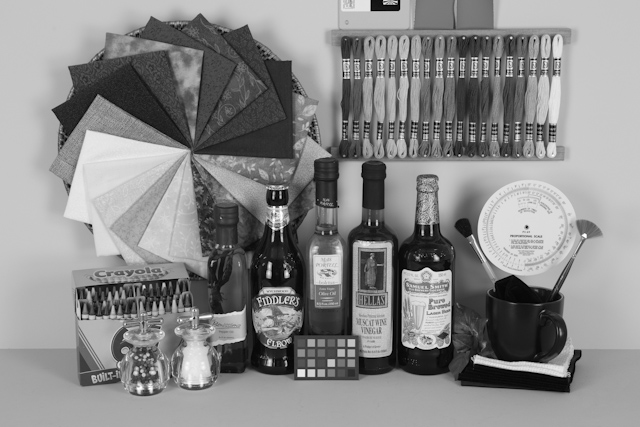
Regular monochrome from Canon 5D Mark III...
Move over the image to see the green filtered monochrome...
The effect is quite strong on the blue and red, but this is on the highest strength setting. The setting can be changed in steps of 5%, so there's quite a bit of room to pick a favorite strength...
Will still take a few days till the next release, with obviously this green stuff in it, since I'm also working on a dead pixel mapper I want to finish up first.
Let me show you two examples.
All settings on the photos are similar. The regular and the green result were edited exactly the same (same contrast, brightness, exposure settings etc...)
First my Leica test photo... regular monochrome and green filtered on the highest setting...
Move over the image with your mouse to see the difference... from regular to green filtered...
(possibly in some browsers this doesn't work - not fully sure... if you see no difference you either have a visual problem or your browser doesn't support the rollover... you then just have to believe me :-) )
And here's an example from the Canon 5D Mark III

Regular monochrome from Canon 5D Mark III...
Move over the image to see the green filtered monochrome...
The effect is quite strong on the blue and red, but this is on the highest strength setting. The setting can be changed in steps of 5%, so there's quite a bit of room to pick a favorite strength...
Will still take a few days till the next release, with obviously this green stuff in it, since I'm also working on a dead pixel mapper I want to finish up first.
Labels:
DNGMonochrome
Wednesday, October 17, 2012
About Green and other stuff...
Getting there.
As written before, the complications were the Canon files.
At least, that's what I thought.
So I mainly looked for differences between the sensor readings of Leica and Canon.
But despite some differences (Canon seems to favor blue a little bit more than Leica does) it didn't make much sense.
The Leica values and the Canon values were too close to explain the big differences I was seeing.
Then I thought I had the model wrong. Not YUV but maybe YCbCr (in the second one the red and blue are gamma corrected), so I tried that. And that did lead to better results, but was also very photo specific. One photo would need a high setting, another photo a low setting... and in some situations the strength setting would cancel out the gamma setting and the filtering would hardly be noticeable.
Overall it wasn't very satisfying, since I still didn't understand what was going on.
Then, at some point, when I was just lazying around, thinking about this problem, I suddenly realized that in all my tests I had been ignoring the black level, and that the black level might not appreciate that very much.
In my Canon test photos the black level was much higher than in the Leica test photos. It explained the big differences I was seeing.
And indeed: incorporating the original black level in the calculations solved it all.
No more need to gamma correct, it just works on the linear data... for Canon and for Leica and for all kinds of black levels.
I've also been working on a red RGB and blue RGB filter. Quality wise they seem to perform better than the chrominance red and blue filters, but the results are also different (gray-toning wise), so the chrominance filters will stay.
And I still need to figure out if the new red and blue filters require some extra coding on the opposite end of the scale (the white level), since there similar issues might exist.
Anyway, I expect to have these three extra filters finished now pretty soon, in the meantime thinking about orange and yellow...
As written before, the complications were the Canon files.
At least, that's what I thought.
So I mainly looked for differences between the sensor readings of Leica and Canon.
But despite some differences (Canon seems to favor blue a little bit more than Leica does) it didn't make much sense.
The Leica values and the Canon values were too close to explain the big differences I was seeing.
Then I thought I had the model wrong. Not YUV but maybe YCbCr (in the second one the red and blue are gamma corrected), so I tried that. And that did lead to better results, but was also very photo specific. One photo would need a high setting, another photo a low setting... and in some situations the strength setting would cancel out the gamma setting and the filtering would hardly be noticeable.
Overall it wasn't very satisfying, since I still didn't understand what was going on.
Then, at some point, when I was just lazying around, thinking about this problem, I suddenly realized that in all my tests I had been ignoring the black level, and that the black level might not appreciate that very much.
In my Canon test photos the black level was much higher than in the Leica test photos. It explained the big differences I was seeing.
And indeed: incorporating the original black level in the calculations solved it all.
No more need to gamma correct, it just works on the linear data... for Canon and for Leica and for all kinds of black levels.
I've also been working on a red RGB and blue RGB filter. Quality wise they seem to perform better than the chrominance red and blue filters, but the results are also different (gray-toning wise), so the chrominance filters will stay.
And I still need to figure out if the new red and blue filters require some extra coding on the opposite end of the scale (the white level), since there similar issues might exist.
Anyway, I expect to have these three extra filters finished now pretty soon, in the meantime thinking about orange and yellow...
Labels:
DNGMonochrome
Sunday, October 14, 2012
DNGMonochrome 0.9.52 beta released
With one bug fix.
The RawImageUniqueID, stored in the DNG, was responsible for the somewhat strange behaviour of Lightroom, where after selecting a monochrome DNG, the wrong preview picture would be shown briefly (provided you had imported multiple monochrome DNGs, created from the same original photo).
The RawUniqueID is now filled for every monochrome DNG with indeed a unique value, and that solves the problem.
You can download the new version of DNGMonochrome here.
The RawImageUniqueID, stored in the DNG, was responsible for the somewhat strange behaviour of Lightroom, where after selecting a monochrome DNG, the wrong preview picture would be shown briefly (provided you had imported multiple monochrome DNGs, created from the same original photo).
The RawUniqueID is now filled for every monochrome DNG with indeed a unique value, and that solves the problem.
You can download the new version of DNGMonochrome here.
Labels:
DNGMonochrome
Friday, October 5, 2012
DNGMonochrome 0.9.5 beta released
[Edit: after releasing 0.9.5, I discovered the new quality slider was not fully operational on the blue filter... that's fixed in 0.9.51, which is currently the version on the download page]
This version improves the working of the quality slider by using a different method, leading to a tighter integration between the smooth and the sharp algorithms.
It leads to overall better results compared to the old method.
Be aware that I'm talking pixel peeping magnifications here (200% to 400%). You'll probably not notice the differences when viewing at 100% or when downscaling the photo.
The quality slider is mainly useful when you want to print large (over 100%), and the usage of it is strongly advised if you go for the red filtering or blue filtering.
The green filtering is not introduced yet in this version, since I'm still experimenting.
It works very nicely for the Leica files, but the numbers on the Canon files do not lead to the right results. I'm still figuring out what the difference is. It is to be expected obviously, since the two companies do not share the same Bayer filter or sensor, so the specs are different.
Also in this version the Canon EOS 5D mark III is now supported.
For Canon users: you first have to convert your CR2 file to DNG with the free Adobe DNG converter and the end product is a monochrome DNG that can not be read by DPP.
You can download the new version of DNGMonochrome here.
Lightroom and Canon files
I discovered the Lightroom preview / cache gets confused on the Canon files.
If you have imported multiple copies of one original DNG (say a regular monochrome DNG and a red filtered monochrome DNG of the same photo), switching to the red filtered monochrome in Lightroom will briefly show the regular monochrome one. It's harmless but looks weird. If you have only one monochrome copy loaded into Lightroom, this problem doesn't occur.
It also doesn't occur on Leica monochrome DNGs, which leads me to believe that it might have something to do with a specific DNG setting put in by the Adobe DNG converter.
Another possibility is that it's a local cache issue, to do with my Lightroom setup.
As said: it's harmless, the correct DNG is shown once Lightroom has it properly loaded after selection, but I will be investigating this issue anyway, see if I can figure out what's causing it.
This version improves the working of the quality slider by using a different method, leading to a tighter integration between the smooth and the sharp algorithms.
It leads to overall better results compared to the old method.
Be aware that I'm talking pixel peeping magnifications here (200% to 400%). You'll probably not notice the differences when viewing at 100% or when downscaling the photo.
The quality slider is mainly useful when you want to print large (over 100%), and the usage of it is strongly advised if you go for the red filtering or blue filtering.
The green filtering is not introduced yet in this version, since I'm still experimenting.
It works very nicely for the Leica files, but the numbers on the Canon files do not lead to the right results. I'm still figuring out what the difference is. It is to be expected obviously, since the two companies do not share the same Bayer filter or sensor, so the specs are different.
Also in this version the Canon EOS 5D mark III is now supported.
For Canon users: you first have to convert your CR2 file to DNG with the free Adobe DNG converter and the end product is a monochrome DNG that can not be read by DPP.
You can download the new version of DNGMonochrome here.
Lightroom and Canon files
I discovered the Lightroom preview / cache gets confused on the Canon files.
If you have imported multiple copies of one original DNG (say a regular monochrome DNG and a red filtered monochrome DNG of the same photo), switching to the red filtered monochrome in Lightroom will briefly show the regular monochrome one. It's harmless but looks weird. If you have only one monochrome copy loaded into Lightroom, this problem doesn't occur.
It also doesn't occur on Leica monochrome DNGs, which leads me to believe that it might have something to do with a specific DNG setting put in by the Adobe DNG converter.
Another possibility is that it's a local cache issue, to do with my Lightroom setup.
As said: it's harmless, the correct DNG is shown once Lightroom has it properly loaded after selection, but I will be investigating this issue anyway, see if I can figure out what's causing it.
Labels:
DNGMonochrome
Wednesday, October 3, 2012
So, how about a green filter?
Yeah.
That was a bit of a complication.
DNGMonochrome has the ability to produce a red filtered photo and a blue filtered photo.
Given that the Bayer filter has three colors (green, red and blue), you might expect producing a green filtered photo would be easy. In fact, you might even think the regular result - based on the green pixels - is already a green filtered photo.
But that's not the case.
The Bayer filter - as explained in one of the previous posts - is set up in the luminance / chrominance model. It means the green pixels register 'luma' and the the red and the blue pixels register 'chroma'.
So where is green?
Well, as far as I understand it now, the Bayer filter operates in the YUV model, which means there is no green.
Nah, obviously there is, but not the RGB green. You can't reach green in the YUV model without converting the values first to the RGB model.
Y stands for luma, U is chrominance blue, and V is chrominance red.
No green.
But how to convert to RGB without color interpolating?
Well, turns out it's fairly easy if you first interpolate the luma (the regular monochrome photo), then the red and the blue filtered photo. Then after applying some simple math, you can calculate the green.
But it's slightly unfair, since for a red and blue filtered photo, it's the chroma red and chroma blue that's being used, not the RGB red and blue, so I might introduce additional filters (a full RGB set, also for red and blue).
I'm not done with this issue...
Why?
Now you might think: why go through all that trouble of interpolating three photos to get to a green filtered (or blue or red filtered) one?
Well, maybe I'll show you next time, but if you think Lightroom can offer the same, you're probably mistaken.
I tried getting to a similar result in Lightroom with the HSL sliders and the color mixer. It's impossible to get to the same DNGMonochrome result without degrading the image.
The strength of DNGMonochrome sits in the fact that it interpolates the photo on one aspect of the color (either luma, chroma, or now also RGB green), whilst Lightroom starts messing with individual pixels, pulling or pushing certain gray tones, introducing artifacts if you go sliding too wild.
They could implement a similar thing - interpolate new after making an adaptation - but the slowdown would also slow down their sales I suspect... it's one of the advantages of giving software away for free: I don't have to bother about sales :-)
That was a bit of a complication.
DNGMonochrome has the ability to produce a red filtered photo and a blue filtered photo.
Given that the Bayer filter has three colors (green, red and blue), you might expect producing a green filtered photo would be easy. In fact, you might even think the regular result - based on the green pixels - is already a green filtered photo.
But that's not the case.
The Bayer filter - as explained in one of the previous posts - is set up in the luminance / chrominance model. It means the green pixels register 'luma' and the the red and the blue pixels register 'chroma'.
So where is green?
Well, as far as I understand it now, the Bayer filter operates in the YUV model, which means there is no green.
Nah, obviously there is, but not the RGB green. You can't reach green in the YUV model without converting the values first to the RGB model.
Y stands for luma, U is chrominance blue, and V is chrominance red.
No green.
But how to convert to RGB without color interpolating?
Well, turns out it's fairly easy if you first interpolate the luma (the regular monochrome photo), then the red and the blue filtered photo. Then after applying some simple math, you can calculate the green.
But it's slightly unfair, since for a red and blue filtered photo, it's the chroma red and chroma blue that's being used, not the RGB red and blue, so I might introduce additional filters (a full RGB set, also for red and blue).
I'm not done with this issue...
Why?
Now you might think: why go through all that trouble of interpolating three photos to get to a green filtered (or blue or red filtered) one?
Well, maybe I'll show you next time, but if you think Lightroom can offer the same, you're probably mistaken.
I tried getting to a similar result in Lightroom with the HSL sliders and the color mixer. It's impossible to get to the same DNGMonochrome result without degrading the image.
The strength of DNGMonochrome sits in the fact that it interpolates the photo on one aspect of the color (either luma, chroma, or now also RGB green), whilst Lightroom starts messing with individual pixels, pulling or pushing certain gray tones, introducing artifacts if you go sliding too wild.
They could implement a similar thing - interpolate new after making an adaptation - but the slowdown would also slow down their sales I suspect... it's one of the advantages of giving software away for free: I don't have to bother about sales :-)
Labels:
DNGMonochrome
Tuesday, October 2, 2012
DNGMonochrome 0.9.41 beta released
This version solves the issue where converted CR2 files from the Canon EOS 5D Mark II would lead to monochrome DNGs that couldn't be read by Lightroom...
If you're not interested in processing CR2 files and you're already using version 0.9.4, there's no need to update to 0.9.41.
You can download this new version here.
If you're not interested in processing CR2 files and you're already using version 0.9.4, there's no need to update to 0.9.41.
You can download this new version here.
Labels:
DNGMonochrome
Monday, October 1, 2012
DNGMonochrome and the EOS 5D Mark II
Got informed by a user (thanks Olivér) that the 5D Mark II converted CR2 files do produce a monochrome DNG, but that Lightroom has trouble reading them.
I use several programs to test the results in, but apparently I forgot to see how Lightroom deals with the 5D DNGs. For the EOS 350D and 40D things go smooth and fine, no problems there, but the 5D Mark II is a bit problematic.
Turns out DNGMonochrome produces a DNG for these files with an uneven number of rows (the 'height' is off) and Lightroom doesn't like that.
This bug is fixed, but I want to run some additional tests to make sure there's no problem with the borders of these DNGs.
So if you want to use DNGMonochrome for Canon 5D Mark II CR2 files, please be patient. The next release (somewhere this week) will fix the problems.
I use several programs to test the results in, but apparently I forgot to see how Lightroom deals with the 5D DNGs. For the EOS 350D and 40D things go smooth and fine, no problems there, but the 5D Mark II is a bit problematic.
Turns out DNGMonochrome produces a DNG for these files with an uneven number of rows (the 'height' is off) and Lightroom doesn't like that.
This bug is fixed, but I want to run some additional tests to make sure there's no problem with the borders of these DNGs.
So if you want to use DNGMonochrome for Canon 5D Mark II CR2 files, please be patient. The next release (somewhere this week) will fix the problems.
Labels:
DNGMonochrome
Sunday, September 30, 2012
DNGMonochrome 0.9.4 beta released
That was quick...
Yesterday, after implementing the speckle solver (see previous post) I discovered two minor bugs that could prevent some DNGs from processing correctly. Those bugs are fixed, and because of those fixes I decided to release this version already.
So in this version: high ISO M8 DNGs and high ISO compressed M9 DNGs should now behave properly, without producing speckles on the two sharper algorithms, and if you did see conversion errors on some DNGs, that issue should now also be solved.
You can download this new version here.
Yesterday, after implementing the speckle solver (see previous post) I discovered two minor bugs that could prevent some DNGs from processing correctly. Those bugs are fixed, and because of those fixes I decided to release this version already.
So in this version: high ISO M8 DNGs and high ISO compressed M9 DNGs should now behave properly, without producing speckles on the two sharper algorithms, and if you did see conversion errors on some DNGs, that issue should now also be solved.
You can download this new version here.
Labels:
DNGMonochrome
Saturday, September 29, 2012
About those speckles...
Well, as you know - if you read some essential blog posts on DNGMonochrome - I discovered some problems with the two sharpest algorithms a while back, most noticeable on high ISO M8 files, leading to white or light gray speckles. So far I haven't seen them on high ISO M9 files, but I also didn't test a lot of high ISO M9 photos.
I discovered the speckles when I was experimenting with a downloaded 2500 ISO M8 DNG, and it took me a while to understand what was happening.
Essentially the two sharp algorithms stay very close to the pixel being interpolated, and the number of pixels looked at - to get to the right value for the pixel under consideration - is small. The advantage: the interpolation stays close to home and it leads to sharper results.
The smoother algorithm averages over a larger area, looks at more pixels, and loses sharpness that way. The advantage though is that noise (and dead pixels) gets eradicated. It leads to a smoother, less noisy, less sharp result and no speckles on high ISO images.
What happens with the sharp algorithms on high ISO is that the color noise starts to have a big impact on the outcome, in a rather negative way. This particular M8 file was riddled with color noise, especially the red channel was totally out of control, with big red blotches in the shadows. As a consequence, the information picked up from the red channel was incorrect. And when averaging based on only a few pixels, these out of control red pixels were too big an influence, causing wrong values for the pixel under consideration, leading to the speckles.
I managed to solve that today and the results are quite satisfying now. Still sharper results than with the smoother algorithm, without the speckles and without using a median filter.
Lower ISO images are untouched by this method. It only kicks in when necessary and on a per pixel basis.
I still need to transport this new approach to the red and blue filtering, and test if I also need to implement this for M9 high ISO files. Need to produce some very noisy photos first for some testing.
Obviously these improvements will be in the next release...
I discovered the speckles when I was experimenting with a downloaded 2500 ISO M8 DNG, and it took me a while to understand what was happening.
Essentially the two sharp algorithms stay very close to the pixel being interpolated, and the number of pixels looked at - to get to the right value for the pixel under consideration - is small. The advantage: the interpolation stays close to home and it leads to sharper results.
The smoother algorithm averages over a larger area, looks at more pixels, and loses sharpness that way. The advantage though is that noise (and dead pixels) gets eradicated. It leads to a smoother, less noisy, less sharp result and no speckles on high ISO images.
What happens with the sharp algorithms on high ISO is that the color noise starts to have a big impact on the outcome, in a rather negative way. This particular M8 file was riddled with color noise, especially the red channel was totally out of control, with big red blotches in the shadows. As a consequence, the information picked up from the red channel was incorrect. And when averaging based on only a few pixels, these out of control red pixels were too big an influence, causing wrong values for the pixel under consideration, leading to the speckles.
I managed to solve that today and the results are quite satisfying now. Still sharper results than with the smoother algorithm, without the speckles and without using a median filter.
Lower ISO images are untouched by this method. It only kicks in when necessary and on a per pixel basis.
I still need to transport this new approach to the red and blue filtering, and test if I also need to implement this for M9 high ISO files. Need to produce some very noisy photos first for some testing.
Obviously these improvements will be in the next release...
Labels:
DNGMonochrome
DNGMonochrome 0.9.3 beta released
No major changes in this version where the algorithms are concerned.
This version adds a strength setting to the red and blue filtering, it improves the speed of the red and blue filtering process, and it adds support for CR2 files converted to DNG (with Adobe's free DNG converter) for the Canon EOS 350D, EOS 40D and EOS 5D Mark II.
I didn't test the smaller RAW format of those Canon cameras, so at present I can't guarantee proper functioning of those smaller RAW formats.
You can download this new version here.
This version adds a strength setting to the red and blue filtering, it improves the speed of the red and blue filtering process, and it adds support for CR2 files converted to DNG (with Adobe's free DNG converter) for the Canon EOS 350D, EOS 40D and EOS 5D Mark II.
I didn't test the smaller RAW format of those Canon cameras, so at present I can't guarantee proper functioning of those smaller RAW formats.
You can download this new version here.
Labels:
DNGMonochrome
Monday, September 24, 2012
DNGMonochrome, next release almost there...
Well, more or less done with the new stuff, just need to run some additional tests.
Converted Canon files now all seem to work, but I've not tested the smaller RAW formats of the 5D Mark II.
If you are interested in this software for CR2 files, do note that you need to convert them first to DNG and that the end result is also DNG, which can't be read by the regular Canon software (DPP). Also, so far only the EOS 350D, EOS 40D and EOS 5D Mark II will be supported. I might extend that a bit with other models, if I can find some online camera specific RAW files.
The strength setting for red and blue works, and I managed to speed up the whole thing again. Not the regular conversion, but the red and blue conversion. Going from 90 seconds on my system to 30 seconds for the whole process, think that's a very welcome improvement.
I've not looked at the algorithms this time, but I do intend to start some more testing on high ISO images, since those were left out during the initial development and do pose some problems.
I figured out what's happening with the sharper algorithms (essentially color noise gets amplified), so I want to see what can be done about that (if anything) apart from diverting to the 'smooth' algorithm...
I've had several questions today, since the software seems to be 'discovered', sparking a sudden interest... bad timing because I'm off on a short break this week, starting tomorrow (Tuesday), so comments and emails might be left unanswered for a few days...
I suspect to have 0.9.3 beta online by the end of this week or in the coming weekend.
Converted Canon files now all seem to work, but I've not tested the smaller RAW formats of the 5D Mark II.
If you are interested in this software for CR2 files, do note that you need to convert them first to DNG and that the end result is also DNG, which can't be read by the regular Canon software (DPP). Also, so far only the EOS 350D, EOS 40D and EOS 5D Mark II will be supported. I might extend that a bit with other models, if I can find some online camera specific RAW files.
The strength setting for red and blue works, and I managed to speed up the whole thing again. Not the regular conversion, but the red and blue conversion. Going from 90 seconds on my system to 30 seconds for the whole process, think that's a very welcome improvement.
I've not looked at the algorithms this time, but I do intend to start some more testing on high ISO images, since those were left out during the initial development and do pose some problems.
I figured out what's happening with the sharper algorithms (essentially color noise gets amplified), so I want to see what can be done about that (if anything) apart from diverting to the 'smooth' algorithm...
I've had several questions today, since the software seems to be 'discovered', sparking a sudden interest... bad timing because I'm off on a short break this week, starting tomorrow (Tuesday), so comments and emails might be left unanswered for a few days...
I suspect to have 0.9.3 beta online by the end of this week or in the coming weekend.
Labels:
DNGMonochrome
Sunday, September 9, 2012
DNGMonochrome - the next release...
It's not there yet, but currently after a short break, I'm back at it.
It's still Experiment I (for a potential Experiment II, I need to learn some new stuff first)...
I'm currently working on support for Canon files.
Adobe has a free DNG converter, in which you can convert the Canon RAW files (CR2) to DNG. And since I still have many Canon photos in my own collection, I wanted to see if DNGMonochrome could convert those converted CR2 files to monochrome.
It needed some small adaptations, but currently the EOS 350D, EOS 40D are fully supported, and I'm working on the DNGs converted from CR2 files from the 5D Mark II. That seems to be the only 'problem' camera so far and requires some additional coding, since the Bayer filter doesn't seem to be in the correct place for DNGMonochrome.
I've also introduced a new setting for red and blue filtering. It will be possible to filter according to a strength setting (ranging from 'full' to 25%). Especially a 50% red setting gives nice results, possibly comparable to an orange filter.
Not sure yet when the release will be, but I hope within two weeks from now...
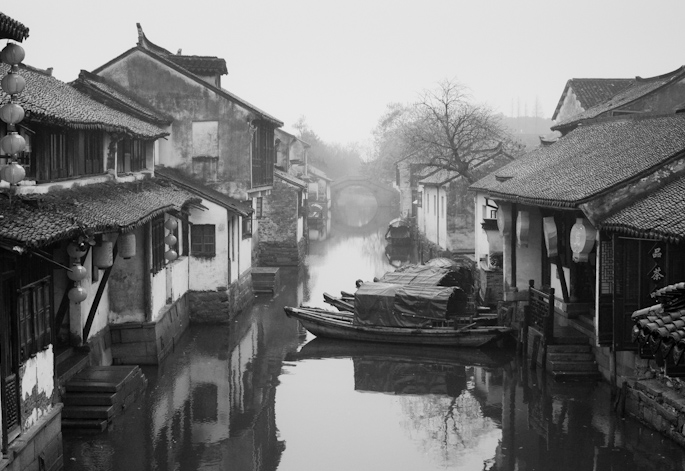
Zhouzhuang, China, December 2007...
Canon EOS 40D with Canon EF 35mm f/2.0 converted to DNG and then to red filtered monochrome with DNGMonochrome...
It's still Experiment I (for a potential Experiment II, I need to learn some new stuff first)...
I'm currently working on support for Canon files.
Adobe has a free DNG converter, in which you can convert the Canon RAW files (CR2) to DNG. And since I still have many Canon photos in my own collection, I wanted to see if DNGMonochrome could convert those converted CR2 files to monochrome.
It needed some small adaptations, but currently the EOS 350D, EOS 40D are fully supported, and I'm working on the DNGs converted from CR2 files from the 5D Mark II. That seems to be the only 'problem' camera so far and requires some additional coding, since the Bayer filter doesn't seem to be in the correct place for DNGMonochrome.
I've also introduced a new setting for red and blue filtering. It will be possible to filter according to a strength setting (ranging from 'full' to 25%). Especially a 50% red setting gives nice results, possibly comparable to an orange filter.
Not sure yet when the release will be, but I hope within two weeks from now...

Zhouzhuang, China, December 2007...
Canon EOS 40D with Canon EF 35mm f/2.0 converted to DNG and then to red filtered monochrome with DNGMonochrome...
Labels:
canon 40D,
china,
DNGMonochrome,
ef 35mm f/2.0,
zhouzhuang
Monday, July 23, 2012
DNGMonochrome 0.9.2 beta released
Programmers - well most of them anyway - like speed. I'm not sure why that is. I guess because they always have the idea things can go faster if it's programmed smarter. Becomes a bit of an honorary thing... or an ego trip, depending on the programmer.
But most of the time, speed is simply a necessity, or even a demand. Speed can be a true bottleneck, for interoperability, for user experience or for other practical reasons. Slow software also has a high irritation factor. Research done by Microsoft shows that users will start to get irritated in a web browser or with regular software, if there's no response within five seconds.
Now what's five seconds?
To be honest, I think people are still quite patient with five seconds :-)
Of course 'not responding' and 'slow' are also two different things.
Anyway... I wasn't too happy with the processing speed of DNGMonochrome, but at first I couldn't figure out why some of the functions were executing like a snail. Then after concentrating on parts of the different algorithms, I was able to identify the main culprit.
And then it became fairly easy to turn it around into a faster version.
So 0.9.2 beta can be downloaded, with a speedier regular conversion, and more speed in the red and blue conversion. Although in those, phase 4 and 5 are still as slow as ever. I might be able to smarten that up too, but no promises.
Also in this version the Save dialog for Windows XP SP3 is fixed and should work now properly.
Still designated 'beta', feels more comfortable for now...
You can download this new version here.
But most of the time, speed is simply a necessity, or even a demand. Speed can be a true bottleneck, for interoperability, for user experience or for other practical reasons. Slow software also has a high irritation factor. Research done by Microsoft shows that users will start to get irritated in a web browser or with regular software, if there's no response within five seconds.
Now what's five seconds?
To be honest, I think people are still quite patient with five seconds :-)
Of course 'not responding' and 'slow' are also two different things.
Anyway... I wasn't too happy with the processing speed of DNGMonochrome, but at first I couldn't figure out why some of the functions were executing like a snail. Then after concentrating on parts of the different algorithms, I was able to identify the main culprit.
And then it became fairly easy to turn it around into a faster version.
So 0.9.2 beta can be downloaded, with a speedier regular conversion, and more speed in the red and blue conversion. Although in those, phase 4 and 5 are still as slow as ever. I might be able to smarten that up too, but no promises.
Also in this version the Save dialog for Windows XP SP3 is fixed and should work now properly.
Still designated 'beta', feels more comfortable for now...
You can download this new version here.
Labels:
DNGMonochrome
M9Tether 2.2d released
Not so great timing, but I can't help it that Leica doesn't follow my schedule. :-)
So after releasing 2.2c, just a few days ago, there's now 2.2d.
The only difference being that 2.2d fully functions with the new Leica firmware (1.196) they brought out today (of course this version also still operates fully with 1.138, 1.162, 1.174 and 1.176).
I designed M9Tether under the assumption the PTP implementation might change with firmware updates, blocking some functionality for use with newer firmware, as a safeguard.
So far (after now four new firmware versions) that assumption turned out to be wrong.
Also in this firmware (1.196) nothing was fixed, changed or added where PTP is concerned and RAMDisk mode operates as it did under the previous firmware. I wasn't able to detect any changes (somehow a bit disappointing, seeing that the PTP implementation really could use some attention - I still notice at least two bugs and the options to change settings on the camera are still as limited as they always were).
You can download 2.2d here.
So after releasing 2.2c, just a few days ago, there's now 2.2d.
The only difference being that 2.2d fully functions with the new Leica firmware (1.196) they brought out today (of course this version also still operates fully with 1.138, 1.162, 1.174 and 1.176).
I designed M9Tether under the assumption the PTP implementation might change with firmware updates, blocking some functionality for use with newer firmware, as a safeguard.
So far (after now four new firmware versions) that assumption turned out to be wrong.
Also in this firmware (1.196) nothing was fixed, changed or added where PTP is concerned and RAMDisk mode operates as it did under the previous firmware. I wasn't able to detect any changes (somehow a bit disappointing, seeing that the PTP implementation really could use some attention - I still notice at least two bugs and the options to change settings on the camera are still as limited as they always were).
You can download 2.2d here.
Labels:
m9tether
Saturday, July 21, 2012
M9Tether 2.2c released
A very minor release with two small memory bugfixes.
The program still suffered from freezes on my Windows 7 64-bit, and after extensive attempts to find the cause, or to even confirm this was just a problem on 64-bit, I had hardly made any progress with this problem.
Technically it isn't a freeze by the way. What happens is that the PTP event system fails. It's unclear if that originates in the camera or in the middle layer on the PC. The signal 'photo ready' isn't sent anymore (or at least not received).
But then, if you change say the ISO setting on the camera (which also causes an event to fire), all the previous events come in one go.
It's not so much a freeze, more of a pile up, like they're quite literally stuck, waiting to be released.
Then after running some additional debugging tools, I did find two lines of code that might have been responsible. I say 'might', because the bug didn't show up always before the fix. It's one of those things... You could snap away ten times and then the eleventh time events would get stuck. And those numbers differed constantly. So testing if the bug is really gone is almost impossible. You can only confirm it's still there (when it happens again), but not really confirm it isn't there anymore (it might happen on your next shot). This is one of the most annoying type of bugs a programmer can run into. And seeing how I'm dealing here with an unstable PTP implementation on the camera, USB drivers, Windows PTP drivers, and then my own code, all working together in an asynchronous event driven system, it's almost impossible to find out what's causing this, without first spending hours on sniffing out the low level communication between camera and PC (which then is only helpful if you can actually quickly reproduce the bug).
But after this fix, and snapping away for a long time, I wasn't able to reproduce the freezes, so I have good hope.
You can download this release here.
The program still suffered from freezes on my Windows 7 64-bit, and after extensive attempts to find the cause, or to even confirm this was just a problem on 64-bit, I had hardly made any progress with this problem.
Technically it isn't a freeze by the way. What happens is that the PTP event system fails. It's unclear if that originates in the camera or in the middle layer on the PC. The signal 'photo ready' isn't sent anymore (or at least not received).
But then, if you change say the ISO setting on the camera (which also causes an event to fire), all the previous events come in one go.
It's not so much a freeze, more of a pile up, like they're quite literally stuck, waiting to be released.
Then after running some additional debugging tools, I did find two lines of code that might have been responsible. I say 'might', because the bug didn't show up always before the fix. It's one of those things... You could snap away ten times and then the eleventh time events would get stuck. And those numbers differed constantly. So testing if the bug is really gone is almost impossible. You can only confirm it's still there (when it happens again), but not really confirm it isn't there anymore (it might happen on your next shot). This is one of the most annoying type of bugs a programmer can run into. And seeing how I'm dealing here with an unstable PTP implementation on the camera, USB drivers, Windows PTP drivers, and then my own code, all working together in an asynchronous event driven system, it's almost impossible to find out what's causing this, without first spending hours on sniffing out the low level communication between camera and PC (which then is only helpful if you can actually quickly reproduce the bug).
But after this fix, and snapping away for a long time, I wasn't able to reproduce the freezes, so I have good hope.
You can download this release here.
Labels:
m9tether
Friday, July 20, 2012
Bandana Boys
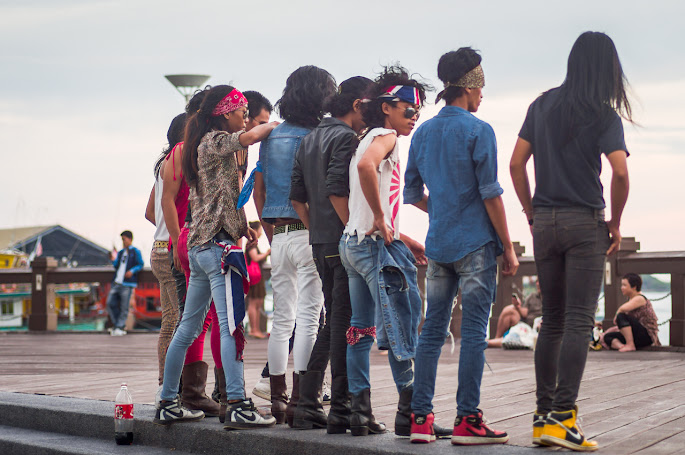 Kota Kinabalu, Sabah, Borneo, Malaysia, 1 May 2012
Kota Kinabalu, Sabah, Borneo, Malaysia, 1 May 2012 Click on photo for the full version...
Expression of individualism - through clothing or tattoos or piercings - is quite rare in Malaysia.
Tattoos and piercings are not done in Islam - that makes it rare within a population where 60 or 70% is Muslim. On Sabah (part of Borneo, Malaysia) a lot of people are Christian and/or from tribal descent (Kadazan - hi Jerome :-) - Rungus, Dusun, Murut etc. - I was told by a Sabahan there are something like 40 of these tribes on Sabah). And although tattoos were apparently not uncommon, within the different tribes, nowadays that practice is no more. Suffered away under pressure of former colonization, religion (Christianity also frowns upon anything that reeks of 'pagan') and let's say 'modernity'. The mindset also there is leaning towards conformism.
It means you don't see this kind of 'wilder' style a lot.
Ah Beng
There is of course the rather typical group of young Chinese in Kuala Lumpur, on the main land, referred to as 'ah beng', but that's more of a (rather big) group thing, They go about with chaotic, spiky dyed hair, baggy pants with a lot of chains - from belt to wallet and such - colorful shirts... you'll recognize them when you see them; the hair is always a give away. Just don't use the term 'ah beng' out loud to address someone, because it has a lot of negative connotations. I only associate the term with a certain style of clothing and hairdo, and I like how this group paints parts of the urban landscape of Kuala Lumpur with their flashy appearance, but for Malaysians and Singaporeans 'ah beng' is associated with poor upbringing, poor education, a low social status, a lack of language skills (not proficient in English or mixing Malay and English, the so called 'Manglish'), even with gangster activities. So you can imagine that it will be regarded insulting and derogatory if you address an individual as such.
I was quickly shushed down by friends who explained the term to me years ago, when I started using it too loudly on the streets of KL, not aware of its negative connotations. Basically it was taught by pointing... 'see, that's one' without a good explanation of the broader implications of the term - so I simply assumed it was about their colorful appearance - but I discovered those implications in time.
Mat Rempit
'Mat Rempit' is another such term, used mostly to describe young Malay street racers (on motorcycles).
It took me a while - after learning the term - to find out what - and especially 'who' was meant by it exactly. This term also carries an abundance of negative connotations: gangsterism, stolen motorcycles, dangerous behavior on the roads.
So I kept pointing at innocent motorcyclists asking friends 'is that a mat rempit?', being shushed again!
But I couldn't help it, because to me almost all these motorcyclists were exhibiting dangerous behavior!
Seriously... they're death defying, driving faster than cars - easily 110 - on what we over here would consider 'mopeds' - really small tires, with hardly any grip, nothing like a real 500cc or even a 125cc motorcycle, with no protective clothing, yes a helmet, barely, and sometimes two or three people on it.
Short pants, sandals, going at crazy speeds on the highway, smack in the middle of all the cars that aren't driving very neatly either, navigating from left to right, where ever there's space...
One moment of distraction, a car not noticing them - moving to their spot - and it's over.
I've fallen with a motorcycle once, fully dressed in protective clothing and I went down with only 30 kilometers per hour, but it took me at least a week to overcome all the bruises and my ankle was quite deeply cut, the one spot that wasn't protected too well and had dragged over the street under the motorcycle. Took months for the cut to fully heal. If you skid over the asphalt with 110 kilometers per hour, without any protective clothing, you're gonna be skinned alive, ending up like chicken filet. If you're not overrun by a car first.
To me they all seemed 'mat rempit'.
And after driving past a dead motorcyclist one day on a rainy dark evening, I wasn't surprised... I just wondered why I hadn't witnessed 'death on the highway' like that sooner.
Traffic was jammed due to his body on the road. The police directed the slow driving cars, like some improvised funeral procession, around him and his motorcycle, which was laying perhaps 10 meters in front of him. They didn't bother about the body - no medical attention - also an indication he was dead. Blood had run out on the wet asphalt from under his helmet, which was still on his head. It's strange how even in the dark you can differentiate between the structure of water and blood, without actually seeing the color; like an oil spill, shimmering in the headlights... not flowing anymore... still...
Young life gone, family distraught, and I wondered, as I always do when I see these young motorcyclists drive: aren't they aware of the risk? Or is it the age? That age where we all thought we were invincible and death was some weird thing that only happened to others?
But even up till now I've not been able to actually identify real 'mat rempit', so they remain somewhat elusive and a bit mysterious. I've also been thinking that maybe they don't really exist as a group and are just some kind of urban myth, cobbled up by suburban folks tired of some rascals.
'Those annoying mat rempit!' and a new term was born... who knows...
...
I'm not sure what kind of group this is, on the photo... none of the above anyway, but they might be 'related' to motorcycles.
Most noticeable is the foot wear, the big sunglasses, the bandanas, the leather jacket (remember it's around 30 degrees Celsius out there at that time of day) the rather tight print pants at the very
end, the leather pants in front of that, the bright red pants, the big black boots that seem too big for his small ankles, the cut off shirt...
The two on the right seem the most conformist, also standing a bit on the outside, detached from the others - with the one all the way on the right kinda shy with his thumbs in his pockets (the long hair is fairly normal on Sabah). If you would take away his yellow shoes (let's not do that) and replace them with sandals, he would drop out, since he's not wearing a bandana or anything 'outstandish'... maybe they're new in the group, not fully sure yet how to behave or dress, or maybe they're just along for the day, passengers, dressed up a bit for the occasion, or maybe the group is tolerant enough to accept any style of clothing...
And in some ways - seeing them as a group - it does fit into the tribal way of things I suppose. Not much different from your 'run of the mill' motor cycle groups - if that's their thing - you also have over here.
Although those might prefer beer to coke (notice the bottle, it's theirs).
They were posing in the sunset for a friend who took a photo...
I always try to join in on these group portraits (usually unnoticed) if I see one, and I like this photo a lot, but can't fully explain why. I guess because it talks to me (like I tried in this comment), not necessarily telling me any kind of truth though...
They might as well be bank employees out on a bachelor party...
I'm not sure what kind of group this is, on the photo... none of the above anyway, but they might be 'related' to motorcycles.
Most noticeable is the foot wear, the big sunglasses, the bandanas, the leather jacket (remember it's around 30 degrees Celsius out there at that time of day) the rather tight print pants at the very
end, the leather pants in front of that, the bright red pants, the big black boots that seem too big for his small ankles, the cut off shirt...
The two on the right seem the most conformist, also standing a bit on the outside, detached from the others - with the one all the way on the right kinda shy with his thumbs in his pockets (the long hair is fairly normal on Sabah). If you would take away his yellow shoes (let's not do that) and replace them with sandals, he would drop out, since he's not wearing a bandana or anything 'outstandish'... maybe they're new in the group, not fully sure yet how to behave or dress, or maybe they're just along for the day, passengers, dressed up a bit for the occasion, or maybe the group is tolerant enough to accept any style of clothing...
And in some ways - seeing them as a group - it does fit into the tribal way of things I suppose. Not much different from your 'run of the mill' motor cycle groups - if that's their thing - you also have over here.
Although those might prefer beer to coke (notice the bottle, it's theirs).
They were posing in the sunset for a friend who took a photo...
I always try to join in on these group portraits (usually unnoticed) if I see one, and I like this photo a lot, but can't fully explain why. I guess because it talks to me (like I tried in this comment), not necessarily telling me any kind of truth though...
They might as well be bank employees out on a bachelor party...
Labels:
borneo,
kota kinabalu,
leica M9,
malaysia,
sabah,
tele-elmarit 90mm f/2.8
Thursday, July 19, 2012
DNGMonochrome - first release
Version 0.9.1 beta
You can download it here, but do me a favor and do read the page a bit, especially the 'Additional remarks' section.
I consider this still a beta version, since I have already seen room for improvement and currently the 'Save' dialog doesn't work on Windows XP (you need service pack 3 for XP anyway, but that won't help - turn on 'autosave'... then you won't need the 'Save' dialog if you're on XP).
So check back soon for the full 1.0
You can download it here, but do me a favor and do read the page a bit, especially the 'Additional remarks' section.
I consider this still a beta version, since I have already seen room for improvement and currently the 'Save' dialog doesn't work on Windows XP (you need service pack 3 for XP anyway, but that won't help - turn on 'autosave'... then you won't need the 'Save' dialog if you're on XP).
So check back soon for the full 1.0
Labels:
DNGMonochrome
Tuesday, July 17, 2012
DNGMonochrome - Progress Report II
Almost there people! Hang on!
Today I've put in the border interpolation.
All seems to work, and Michael (let's not take any risks here, like with DNGRender...) was kind enough to start beta testing version 0.9.
If he doesn't discover anything I don't already know, the software will be online within two days (let's not pressure him... :-) )
Today I've put in the border interpolation.
All seems to work, and Michael (let's not take any risks here, like with DNGRender...) was kind enough to start beta testing version 0.9.
If he doesn't discover anything I don't already know, the software will be online within two days (let's not pressure him... :-) )
Labels:
DNGMonochrome
Monday, July 16, 2012
Saturday, July 7, 2012
DNGMonochrome - Progress Report
On schedule with the software and expect to have it ready within a few days from now.
Was struggling with the preview picture (embedded in the DNG).
Contrary to popular belief, that's not a JPG, but an uncompressed bitmap (at least in the M9 and M8 DNGs).
The problem was creating a new preview picture, based on the monochrome DNG.
That annoying little preview was perhaps the most complicated part of this whole project.
The difficulty sits in the fact that the preview picture is RGB, but the monochrome DNG only has one plane. That's a bit of a tricky conversion.
After a lot of effort it was still color (in the monochrome DNG), then it was just black - progress, at least the colors were gone! - then it turned red, then purple and then blue - colors back again, but not in the right order - seriously, this stuff isn't easy :-) - and then finally I had it monochrome.
But then it was linear monochrome, which means it was too dark.
Gives a weird effect when you import the DNG in Lightroom, since Lightroom first shows the preview - in the meantime interpolating the RAW. But with the monochrome DNG, interpolation isn't necessary, so loading is done quickly and there would be a strange flashy transition from dark to light. Didn't give a very stable impression, although there was nothing wrong with the DNG.
Anyway, those problems are solved.
Now I still have to solve the first and last 2 rows and columns of the photo, because those are skipped in the interpolation. The algorithm has to look around the pixel being interpolated, and that's not doable on the edges of the photo. In 'dcraw' that's solved by first applying a bilinear interpolation on those first/last two rows/columns.
I might try the same trick.
I also tried M8 DNGs, which are quite different from the M9 DNGs. Raw 8 bit data, in stead of the 14 bits of the M9, some different settings within the camera profile, and the preview picture - although also an uncompressed bitmap - is stored differently. I managed to get it to work, yet only tested with two M8 DNGs. But those two work perfectly.
The one thing I haven't tested yet are compressed DNGs (neither M9 nor M8), so that will be next.
Otherwise it's all coming together...
(...first screenshot now visible here)
Was struggling with the preview picture (embedded in the DNG).
Contrary to popular belief, that's not a JPG, but an uncompressed bitmap (at least in the M9 and M8 DNGs).
The problem was creating a new preview picture, based on the monochrome DNG.
That annoying little preview was perhaps the most complicated part of this whole project.
The difficulty sits in the fact that the preview picture is RGB, but the monochrome DNG only has one plane. That's a bit of a tricky conversion.
After a lot of effort it was still color (in the monochrome DNG), then it was just black - progress, at least the colors were gone! - then it turned red, then purple and then blue - colors back again, but not in the right order - seriously, this stuff isn't easy :-) - and then finally I had it monochrome.
But then it was linear monochrome, which means it was too dark.
Gives a weird effect when you import the DNG in Lightroom, since Lightroom first shows the preview - in the meantime interpolating the RAW. But with the monochrome DNG, interpolation isn't necessary, so loading is done quickly and there would be a strange flashy transition from dark to light. Didn't give a very stable impression, although there was nothing wrong with the DNG.
Anyway, those problems are solved.
Now I still have to solve the first and last 2 rows and columns of the photo, because those are skipped in the interpolation. The algorithm has to look around the pixel being interpolated, and that's not doable on the edges of the photo. In 'dcraw' that's solved by first applying a bilinear interpolation on those first/last two rows/columns.
I might try the same trick.
I also tried M8 DNGs, which are quite different from the M9 DNGs. Raw 8 bit data, in stead of the 14 bits of the M9, some different settings within the camera profile, and the preview picture - although also an uncompressed bitmap - is stored differently. I managed to get it to work, yet only tested with two M8 DNGs. But those two work perfectly.
The one thing I haven't tested yet are compressed DNGs (neither M9 nor M8), so that will be next.
Otherwise it's all coming together...
(...first screenshot now visible here)
Labels:
DNGMonochrome,
leica M8,
leica M9
Friday, July 6, 2012
Wednesday, July 4, 2012
Sunday, July 1, 2012
DNGMonochrome - an experiment - conclusion
Turning M9 color DNGs into monochrome DNGs
A series about the development of an experimental piece of software, called DNGMonochrome, able to convert color DNGs into monochrome DNGs...
The software is available here.
Please note that this post is based on the very first version of DNGMonochrome... Quite a bit of changes and improvements were implemented in subsequent versions... if you want to get an updated view, select the label DNGMonochrome on the right (or at the bottom of this post) and read the more recent blog posts...
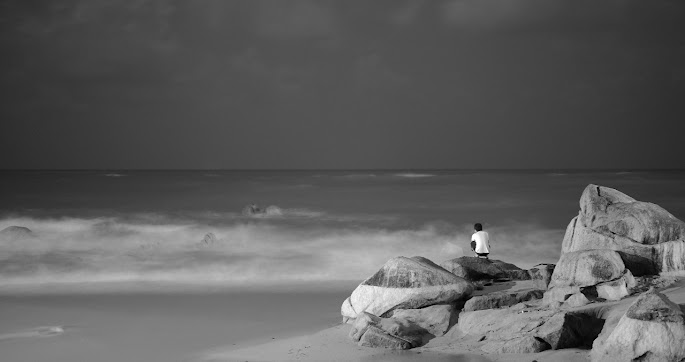
"Contemplating"
(a six seconds exposure at night at the beach, 50mm Summilux f/1.4 asph, ISO 200... the complete stranger on that rock sat still long enough...)
M9 color DNG turned red filtered monochrome DNG by DNGMonochrome.
(some additional post processing on this one)
Click on it for the 1280 pixel wide version.
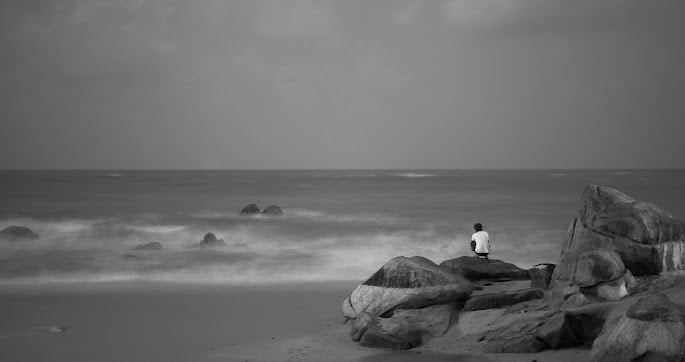
"Contemplating"
(a six seconds exposure at night at the beach, 50mm Summilux f/1.4 asph, ISO 200)
M9 color DNG turned blue filtered monochrome DNG by DNGMonochrome.
(some additional post processing on this one)
Because of the long exposure the sea becomes very fuzzy as opposed to the sharp rocks that don't move. The blue filter pulls the sky and the sea out, creating the strange illusion that the guy on the rocks is watching an out of focus movie (like the sea is projected onto a screen), or that the rocks and him were pasted on top of the photo... The red filtered one also creates that illusion, but less strong...
Click on it for the 1280 pixel wide version.
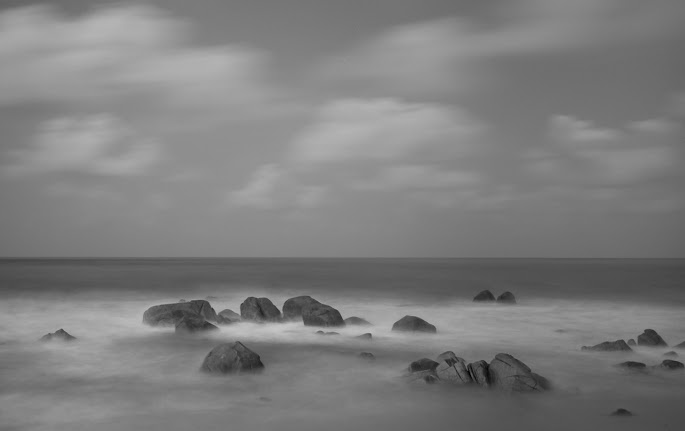
"Rocks"
(a 32 seconds exposure at night at the beach, 28mm Elmarit f/2.8 asph, ISO 200)
M9 color DNG turned blue filtered monochrome DNG by DNGMonochrome.
(some additional post processing on this one)
Click on it for the 1280 pixel wide version.
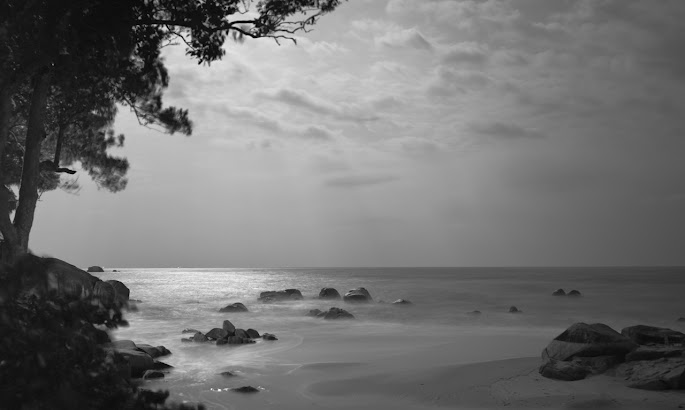
"Moonlit"
(an eight seconds exposure at night at the beach, 28mm Elmarit f/2.8 asph, ISO 500)
M9 color DNG turned blue filtered monochrome DNG by DNGMonochrome.
(some sharpening and noise reduction on this one)
Click on it for the 1280 pixel wide version.
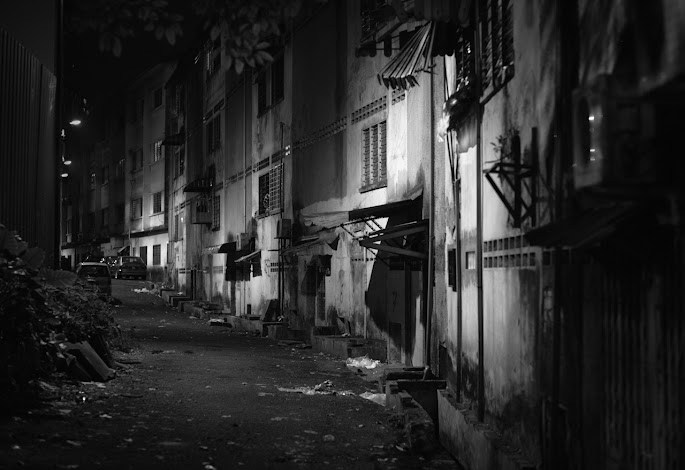
"Alley"
(1/30sec, Summilux 50mm f/1.4 asph, ISO 640)
M9 color DNG turned regular monochrome DNG by DNGMonochrome.
(no sharpening or noise reduction)
Click on it for the 1280 pixel wide version.
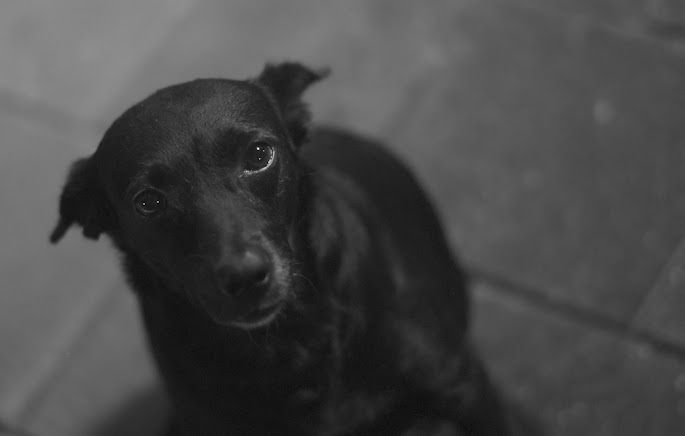
"Fatty Davis"
(1/15sec, Summilux 50mm f/1.4 asph, ISO 640)
M9 color DNG turned regular monochrome DNG by DNGMonochrome.
(sharpening and noise reduction applied, she really needed some TLC (and a cookie))...
Click on Fatty for the 1280 pixel wide version.
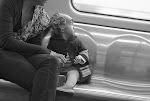

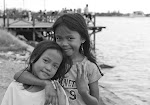
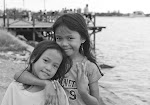
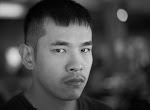
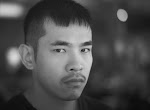


All the examples from the other parts... click on any of them for a 1280 pixel wide version... none of them have sharpening or noise reduction applied...
All the DNGs produced by DNGMonochrome were compared with output from Lightroom 3.6 and all JPGs were produced by importing the monochrome DNGs into Lightroom 3.6 and exporting them after additional post processing (some more than others). Despite my comparisons and sometimes condescending remarks about Lightroom, I like the program a lot and it treated my monochrome DNGs with full respect.
Special thanks to E. for listening to me rant about red, green and blue for weeks, and to Y. for the use of his portrait in this experiment...
---------------------------------------------------
The Assumption (from part I)
Creating a color photo out of a RAW file requires more processing than creating a monochrome photo out of the same RAW file.
The Idea (from part I)
If you turn a photo B&W in Lightroom, it's still based on the processed color photo. What happens if you use a lighter method to turn the RAW into monochrome? If you want monochrome, couldn't the interpolation be simpler, possibly leading to better results?
The Result
You be the judge after reading this series, looking at the photos and in the end - if you like - by trying the software.
The Method
I use the green values (the green filtered pixels on the sensor) or the red values (for a 'red filtered monochrome DNG') or the blue values (for a 'blue filtered monochrome DNG') to interpolate the photo. And to be able to do so, I implemented three algorithms, which I call Ratio I, Ratio II and Gradient (with 'Gradient' strongly based on the VNG algorithm, and Ratio I and II based on a more simple gradient principle with edge detection - all algorithms mixed with parts from ratio based approaches). I can also mix Ratio I or II with Gradient and use Gradient that way to prevent certain artifacts whilst retaining the sharper output.
I do not want to take credit for the algorithms, since the basic principles of the ones I use were thought up by other people... I just adapted.
Is this a new idea?
No... well, part of it isn't.
What isn't new about it is taking the luminance part of the color and using that to convert to black & white.
Several photo programs can do something like that by converting the RGB photo first to a different color model, Lab for instance (don't be discouraged if you don't understand one iota from what you read in that link, since that article was written by superNerd... he's known for his somewhat incoherent babble, bit like Heidegger... they speak great truths, but nobody knows it for sure...).
Then they use the L part of the Lab conversion to produce a monochrome photo (the L in Lab stands for Lightness and that's not the same as Luminance in the luminance / chrominance model, but lightness is calculated based on luminance, so they are related... ask superNerd if you don't believe me, but make sure you have time enough for his answer...).
But the basis of such a method is the RGB color photo.
At some point early in the chain, there had to be color interpolation (even if it's a JPG straight out of your camera, it was color interpolated - in the camera).
Then there's all kinds of options in Photoshop, where you can twiddle with the RGB channels and easily filter out parts of the RGB image.
I'm skipping the RGB result completely - no full color interpolation, just a little bit of it - and go straight to the L(uminance) via the green pixel values, cutting all kinds of corners. And that's the biggest difference of course, because to achieve that - avoiding the RGB result - I had to implement my own algorithms.
That might be new, I don't know if other nerds out there tried this before iNerd (that's me) tried it.
All the consequences of this method, compared to all kinds of other methods out there, I also don't know, because I have tried only a few (mainly in Lightroom version 3.6).
I am just interested in creating a monochrome DNG, hoping to end up with cleaner and sharper results (so far so good).
You might be able to achieve similar results with other methods. But if the assumption is that you can get sharper results by making the interpolation simpler, avoiding the heavy duty color interpolation algorithms seems almost mandatory. My recently failed detour with DNGRender seems to support that theory: the algorithm that works fine for monochrome, produces quite some problems when applied to create a color photo. So if you attack those color problems by toughening up the algorithm - or by applying additional steps afterwards - there's also the risk that you start losing detail.
And about the L part of this method, theoretically speaking: I'm not sure if I am even allowed to call the green pixels 'the L(uminance) part'.
Walking the Line
The color police might fine me, because the green pixels are the L part in a color model, but I don't produce a color photo!
That might already be walking the line - on the border of the color law - seeing how I render the Bayer filter useless - 'in a Leica for god sake!' I can already hear them curse...
But me calling the green pixels the 'L' part and not producing color with it... that might be too much for some trigger happy color cop.
So I'm not sure what - or how - to call them when the green pixels are used outside a color model ('green pixels' actually sounds fine to me).
Possibly new
What is new about this (I think) is the DNG conversion.
I don't know of any software that performs this trickery on the RAW data (which doesn't mean it isn't already out there). Also, although I use the M9 DNG, I could have just as easily chosen a Canon CR2 raw file. The principle stays the same.
I realize that my choice to convert to DNG might be confusing to some, because TIFF seems more appropriate (although essentially DNG is more or less an extended version of TIFF), but I had the urge to keep it within the DNG, mainly because it's easier to program for.
I do not consider these converted DNGs 'RAW files' anymore... It's difficult to say what they are exactly. They contain linear data and all the values stay within the RAW boundaries - and at least one channel represents sensor output - but I think a true RAW file should represent the total sensor output. And that is something they don't do.
The One Issue
Now, the FBM (Federal Bureau of Monochrome) might fine me for a completely different reason, because this method has one issue: it's entirely unclear what the monochrome conversion is actually showing you (tonal range, spectral sensitivity... or in simpler terms: what level of 'gray' should a particular shade of e.g. yellow get, compared to say a particular shade of e.g. purple in the same scene...)
The algorithm can be improved, I can make sure the output is artifact free (give me a few months and a lot of free time) but this issue - if you feel it's an issue for you - can not be resolved.
Also, don't ask me about the specifics of this issue, since I don't know what the spectral sensitivity is of the luminance part of the M9 sensor.
I'm just a guy who had an idea.
I don't have black & white eyes, nor a brain that can convert what I see to black & white. I also don't have any black & white film experience. I think this stuff can all be found out, by running clever comparisons between black & white cameras, black & white film types, and this method.
But I also have a life (sort of).
Then again, one could simply argue: this is M9 black & white film. If you don't like it, load her up with Lightroom B&W film, and you have more (fuzzy) choice.
So not bothered, ignorant and not limited by burdens from the past - taunting the color police and the Federal Bureau of Monochrome - I just muddle on with this piece of software.
And when the software is finished (at least in a first version), you can be the judge of your own DNGs. I designed it for my own benefit foremost (like M9Tether), I don't mind sharing and I like writing about it. If you read this series in full, you can draw your own conclusions.
Of course, for people coming from black & white film, this issue can not be brushed aside that easily, and I fully understand if they object to this method on the grounds of it being too different from the film look they might be after.
Be aware
Be aware though, that if you do try DNGMonochrome you know what you're doing, because me not caring about the objections of the authorities, doesn't mean I don't care about the quality of the overall result.
At least browse through these posts to get an understanding of the method. There are downsides if you use the wrong combination of algorithms for the purpose of the photo.
This method also isn't suitable for every photo and if you do discover artifacts I didn't catch, there's nobody to help you out.
One of the bigger issues for instance I haven't solved yet (and might never solve) is moire.
Moire
Faulty sensor data (basically the detail not being caught by a red, green and blue filtered pixel, but only by e.g. a green filtered and a blue filtered pixel, leading to the wrong color - happens on slanted or diagonal lines that are too thin to cover the full three colors of the sensor pixels), causes what we call moire in the color scene and something entirely different in the monochrome scene. I know it's moire, because I see it in the original color version, but on first sight, in the monochrome version, I didn't recognize it as such. It has a different characteristic compared to the color version.
Some really fancy algorithms are able to deal better with the faulty sensor data and produce less moire. There's also algorithms around to deal with moire afterwards (sort of cleaning up after the fact - a moire Dustbuster), but implementing those properly takes a lot of time (I haven't tried the 'moire' tool in Lightroom 4 yet, basically slipped my mind... kinda interesting to find out if it can tackle the monochrome 'moire'...)
Printing
I also don't know how these results will hold up in print. I don't print a lot and currently I don't even have a workable printer (they always break down on me). I wish that were different, because I'm very curious to find out how some of my results look on large prints.
This method needs to prove itself especially in large printing. In that sense all this requires more testing.
My own personal opinion
Am I gonna use DNGMonochrome?
For sure (and I already did, if you look at the examples), seeing that the increased resolution or sharpness and the lack of color noise seems a benefit.
Fatty Davis, shown in part VI, was one of the best examples.
It's also the only way for me to spot any shortcomings in the software.
Then again, I can hardly be called objective about this and I'm an amateur photographer... my demands or look at photos might be quite different from yours. So for what it's worth...
But I will keep testing, experimenting and I have a few more algorithms I'd like to give a try. Downside is that the more new stuff I implement, the more time consuming it becomes, because I have to compare all the results. My aim is to get to one algorithm, which can combine the current sharpness with less artifacts, to get rid of the mix overs. Next step will be to inspect the Gradient algorithm, to see if I can improve it for monochrome.
I don't convert many photos to B&W, because frankly I'm impressed by the Leica M9 color output and I like color, but I also like the possibility to have monochrome output, at least as an option to consider. Most of the examples shown at the beginning of this post I like better in color, but they were good photos to experiment with, especially to show what blue filtering can do.
Working with these DNGs I notice they are clean, tack sharp and seem to have a sort of 'quiet' quality I can not put properly into words. Perhaps it's the lack of underlying color, perhaps I'm not objective enough, perhaps... but who cares...
Use it if it suits you, don't use it if it doesn't.
If you do use it, feel free to contact me (preferably through the email on the download page) to let me know your results and if it works for you, especially if you decide to print some of your results really large.
Pros and Cons
Let me try to sum up the pros and cons, as objectively as possible:
positive
- sharper output
- cleaner output (no color noise)
- full blown monochrome DNG (fully editable in Lightroom and others)
- ability to go for full red or blue
negative
- spectral sensitivity is unclear (although it can be found out by comparing to other methods, other cameras and/or film, I can not change it if you don't like the current output)
- possible artifacts if you use the most dangerous settings
- possible artifacts I haven't spotted
- the method is untested in (large) printing
- you have to know what you're doing and get a bit of an understanding of the method
- you have to be careful with the results and inspect them more thoroughly than you might be used to, especially if you intend to go over a 100% in printing.
When can I try this?
In a few minutes, after you download and install it.
It is for PC / Windows, but if I get requests enough I might try to port it to OSX. Theoretically that should not be too difficult, but the user interface might be a little bit skinnier, since I'm foremost at home, as a programmer, in Windows.
The download page can be found here.
---------------------------------------------------
And let's not forget...
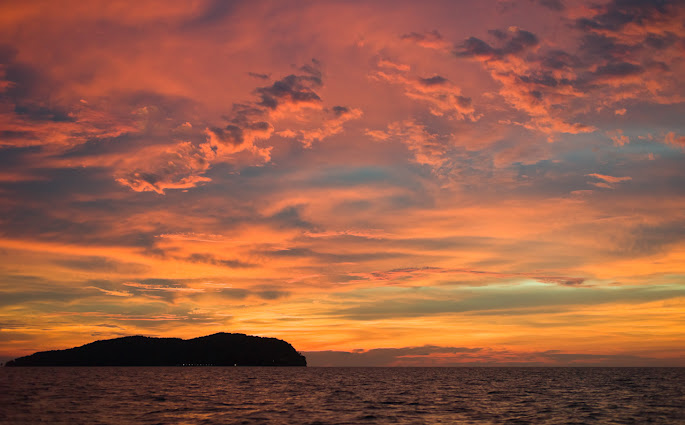 ...color is nice too...
...color is nice too...Kota Kinabalu, Sabah, Borneo, Malaysia, 1 May 2012
Click on photo for the full version... DNGMonochrome had nothing to do with this one...
The inspiration that led to the name 'Fatty Davis' for the dog...
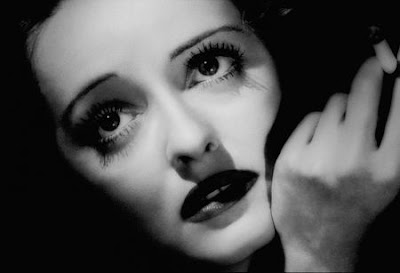
Stunning photo of Betty Davis...
Photographer unknown to me...
It was exactly this photo that leaped into my mind, leading to the name 'Fatty Davis' for the black (kinda fat) dog...
It's those eyes...
-------------------------------
"Stay on the road. Keep clear of the moors!" in part IV - line from 'An American Werewolf in London'
After seeing the results on this blog, Richard, from part VI, resigned from the color police and bought a Leica M9 so he can turn his color photos into monochrome.
The color police and the Federal Bureau of Monochrome do not really exist (I hope).
Labels:
DNGMonochrome
Thursday, June 28, 2012
DNGMonochrome - an experiment - VI

...what's lurking in your DNG files that you haven't seen yet?
Turning M9 color DNGs into monochrome DNGs
A series about the development of an experimental piece of software, called DNGMonochrome, able to convert color DNGs into monochrome DNGs...
The software is available here.
Before we go on, let me first show you another example of a photo I was recently experimenting with. It was a difficult shot... at night, dark, a black dog that didn't want to stay put for very long... ISO 640, 1/15sec, not easy to focus but I think I managed on the shimmer in her eyes... I decided to turn the dog into black & white in Lightroom, so she was a good candidate for DNGMonochrome.
Meet Fatty Davis, street dog turned pet, actually a name we constructed after me producing the black & white photo, because she reminded me of a photo of Betty Davis...
(No offense to Betty Davis... Betty, you were awesome, loved your eyes!)
Here's both versions of the unprocessed photo, only cropped and with contrast/brightness adaptations to get the results as similar as possible. There's no big version of this one, so the results here are the uploaded sizes.
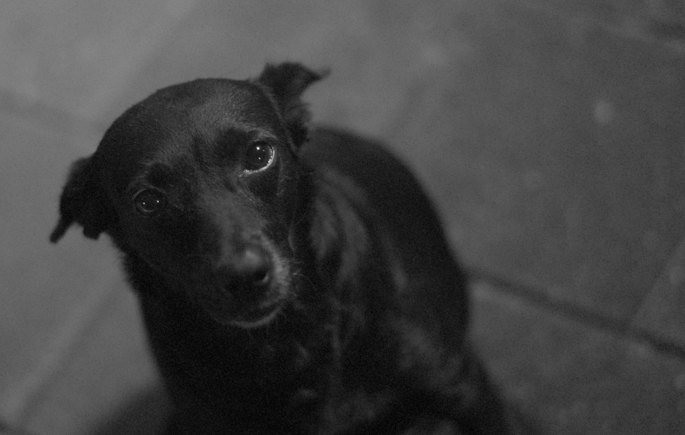
Fatty Davis done by Lightroom B&W...
No sharpening or noise reduction (color nor luminance)...

Fatty Davis done by DNGMonochrome...
No sharpening or noise reduction... note also the background and compare, especially the tiles on the right...
No sharpening or noise reductions on either one, and sharpening for the shown size is also not necessary, but noise reduction? Because especially when you start zooming in you discover that on the Lightroom version you really have to work a lot harder to get the results more acceptable... the color noise is detrimental...
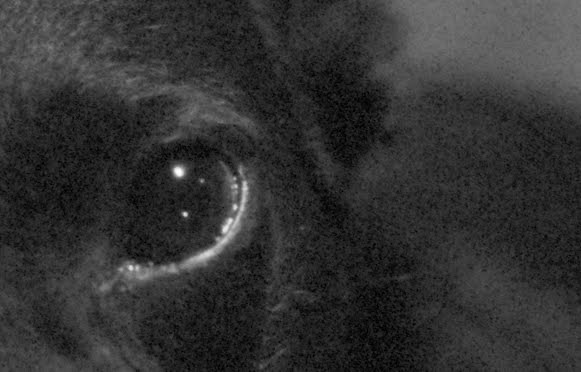
In The Eye of Fatty Davis, done by Lightroom B&W...
No sharpening or noise reduction... (where's the shine?)
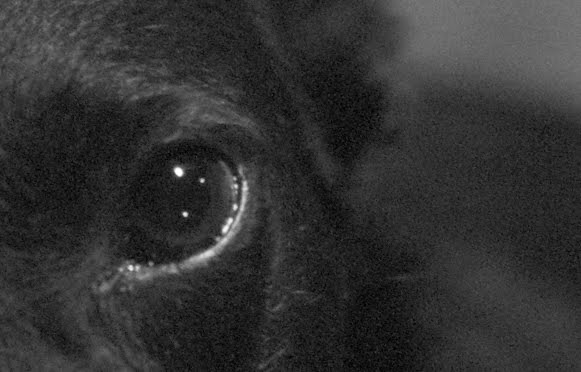
In The Eye of Fatty Davis, done by DNGMonochrome...
No sharpening or noise reduction... (oh, there it is...)
And yes, of course you can get rid of that color noise. Desaturating might actually help out here (didn't try that). But look at the bigger photos: there is hardly a difference to be had by Lightroom's color mixing, because this is the result I was going for. A black dog, in the dark night, on gray tiles... the color photo was already pretty monochrome.
The colors (and the color noise) are absolutely useless. And in such a case I want to get rid of them completely, and not by damaging detail with a slider.
I would then much rather start with the sharper monochrome result, and without the mush and color crud.
Besides, on this particular photo, Lightroom lost, because even with toned down color noise, sharpening and other adaptations, DNGMonochrome produced the nicest sharpest result, with less effort, and it fully preserved those shiny eyes, which is what this photo is about.
That said, and that being true for this photo: that doesn't mean it's true for all the other photos out there (we all know it's not, because most photos are not about black dogs named Fatty Davis...).
My point is that DNGMonochrome shouldn't be considered a replacement, but a very handy tool for photos that can use it. And this was one of those photos that perfectly illustrates my point.
The Girls from part V


Summilux 50mm f/1.4 asph, ISO 160... shot with the sun behind the kids and me not professional enough to properly expose for their faces, led to a photo I had to push a bit (raised exposure and blown highlights in the sky)... the photo is slightly cropped... no sharpening and no noise reduction... the shown size (320 pixels here) is not the uploaded size... click on either one for a 1280 pixels version... stick to the 'full' version... the other sizes are automatically down scaled and do not reflect the true output...
M9 color DNG turned into two different monochrome DNGs with DNGMonochrome and the Ratio II algorithm...
M9 color DNG turned into two different monochrome DNGs with DNGMonochrome and the Ratio II algorithm...
So what's happening with these girls?
Yes indeed... sitting there with my Bayer filter and after getting a bit tired of those green pixel values, I thought 'what a waste... such a nice color sensor and it's all gone...'.
So I decided it would be fun to try the same trick on the red pixel values, more or less creating a monochrome photo with a strong virtual red filter on the lens.
The effect is that areas with a lot of red get lighter, areas with less red get darker.
The left result is the regular monochrome DNG and the right result is the 'red filtered' monochrome DNG.
I have to warn you though, this part in the software is truly experimental, because at first I wasn't thrilled about the quality of the results.
The quality problem arises from the fact that on a Bayer filter you have 50% of green, but only 25% of red.
There's less solid information to start with, but the bigger problem is that the area of 'guessing' is extended (from 50% to 75%), which increases the margin of error.
Idea Number Seven
I then tried a multitude of ideas to improve the quality, and with Idea Number Seven, after a week of fruitless attempts, I finally had some success, confirmed by the MSE calculation.
It's a slow procedure (takes about 2 or 3 minutes per photo on a fast computer) but it does lift the quality of the red interpolated result, more towards the quality of the regular monochrome result.
However, the red interpolation really needs the best combination of algorithms (Ratio II mixed with Gradient or the full Gradient). If you start with Ratio I you can quickly discover defects when zooming in to about 300%.
It's simply not as solid as the result based on the green values and the red interpolation produces slightly more noise.
Blooper
This is from one of the ideas I had, a test run. It was Idea Number Five, which took a gross 45 minutes to calculate. Not wanting to wait for a test result on the whole photo I just ran a part of it... The dark band is the red filtered part in the otherwise regular monochrome photo. As you can see, when put like this, it really resembles a filter, like something was put in front of the lens.
I was interested mainly in my test subject's face and in the shopping bags carried by the out of focus persons on the right, since those are bright orange in the original color version. They made for a nice reference point to see if they would lighten up (that they did... Idea Number Five didn't totally suck and it resembles Idea Number Seven, which is a lot faster...).
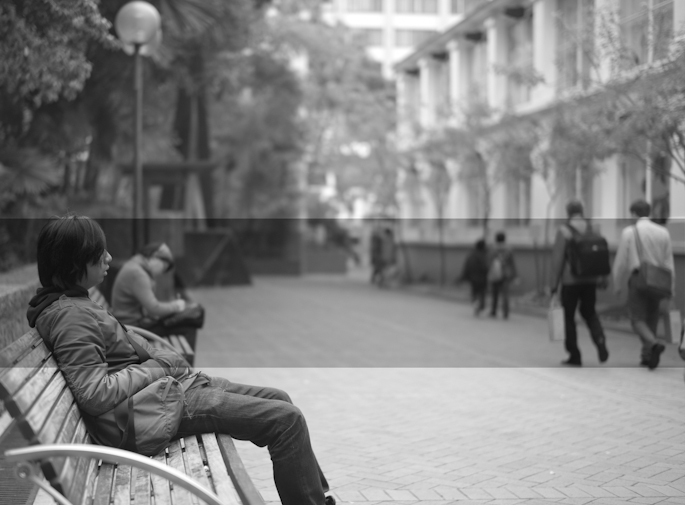
Blooper... test run of Idea Number Five that took too long per photo, so I only ran parts of it to see what the results would be... The darker band is the red filtered part in an otherwise regular monochrome photo... Idea Number Five didn't make it...
And what about blue?
Yes of course, that one too. I haven't shown you that one, but based on the same method as the red filter, DNGMonochrome can also produce a blue filtered version. In fact I'm also investigating orange and yellow filters. But because I'm still not color interpolating these colors are more difficult. Red and blue are relatively easy, because they exist as such within the sensor values. For orange or yellow that's a different story. Although orange might be achieved by cleverly mixing the regular and red result, I haven't tried that, because essentially that's color interpolating (now that would be some detour). It might introduce color noise and spoil the clean results so far... My current 'orange' approach works differently but is still flawed. Other options than red and blue won't be in the software until I'm sure I can make them work without losing too much quality.
We were already pretty sick of this whole endeavor, but now you're also downgrading the sensor! (Richard - desk officer at the color police...)
Now, at this point, some not so clever desk officers at the color police might start claiming that by using this method you are effectively reducing the sensor to 4.5 mega pixels (as opposed to the 18 mega pixels the sensor carries), because there is only 25% of red on the sensor (25% of 18 million is 4.5 million). Essentially it would be the same as claiming that the luminance interpolated photo is downgrading the sensor to 9 mega pixels.
Don't let them talk you into this, because it's not true.
Although the red on the sensor is only 25%, the interpolation algorithm actively uses the green and blue values to determine the outcome of the pixel under consideration. Without the green and blue values, the algorithm is lost. It needs those values to determine where (and how) to look for the proper value for the pixel being interpolated.
It means that the 75% of the sensor not carrying red, is still extremely useful and necessary to get to a good outcome.
If you would fill the sensor with zeros for the green and blue values, then it would be true, but then your photo would look pretty ugly. Like an up-scaled version of a photo from a 4.5mp sensor. You would be filling the gaps with information only based on the red values and that's not how the algorithms work.
Claiming that this method is downgrading the sensor (in any way shape or form) is false.
The sensor is utilized the full 100%, no matter if you interpolate based on the green values, based on the red values or based on the blue values.
Richard of the color police can only claim that the end result will be less good (quality wise) compared to starting with 50% green pixel values (and assuming the same algorithm is used for both versions).
And the red and blue result is indeed less good, even with my extended method. It's simply impossible (I think) to get to the same quality as starting with 50% green. No matter how smart the algorithm, you have to extend the area in which you are averaging, so you increase the margin of error. At some point at some magnification - if you compare it to the result that started from a solid 50% - that will show.
Fun
I must say, this has been fun for me personally.
I don't have any 'filter' experience, so seeing what purely red does to a photo is interesting. Especially human skin is influenced a lot. It gets whiter, turns shiny, almost glowing, imperfections are eradicated.
At first I thought it was the algorithm being fuzzy, but close inspection (especially when I ran the similar blue result, which has an almost opposite effect) revealed that's not the case. This is the strange 'glowy' effect the virtual red filter has on skin. Not too surprising of course, seeing that blood runs through it (I was also wondering if the 'glowing' effect might have something to do with infrared, but that's very much out of my league... I know the M9 has a filter to block infrared, but I don't know how strong that is - so I might be totally off base here).
See the next two photos, normal monochrome and red filtered monochrome. They're almost two different persons (these are test photos people... looking at the red filtered result I'm not sure if you should try this with any of your subjects if you know them well... I asked and graciously got permission from the person you're seeing here, to use his image and these results in this experiment... he's less dangerous than he looks here, but sometimes it's wise to make sure anyway...).

'Are you looking at me?'
M9 color DNG turned regular monochrome with DNGMonochrome... no sharpening or noise reduction...
The shown size here (640 pixels wide) is not the uploaded size. Click on the photo for the full 1280 pixel wide version...

'Are you still looking at me?'
M9 color DNG turned red filtered monochrome with DNGMonochrome... no sharpening or noise reduction...
The shown size here (640 pixels wide) is not the uploaded size. Click on the photo for the full 1280 pixel wide version...
This was the Summilux 50mm asph wide open, hence only one eye is in focus... me practicing my focusing skills... no sharpening or noise reduction on either one, but I might have turned on the 'smart median filter' on the red result, and used Ratio II with a Gradient mix... I also put some more effort in the post processing of these DNGs... remember that I too am new at dealing with monochrome DNGs... it does take some getting used to, because although there's no color, you still have a lot of options to change the appearance of the photo...
Notice that the ISO was 640 on this one. On the regular monochrome (no noise reduction applied) you really can't tell. I only checked ISO after I saw the red result, which is more noisy (especially visible in the background).
Downsides?
Yes, that too... obviously the quality is slightly less compared to the luminance interpolated result, I already discussed that. It shows especially on 'busy' photos with a lot of detail, like in the next example. I also think this method is only suitable for some photos. Unless you're after special effects, using this on people like I did here might cause some aggression.
The effect - as you can see - is not very subtle and without too much effort you can turn your subjects into waxy ghosts.
For landscapes you might be happy with it though.
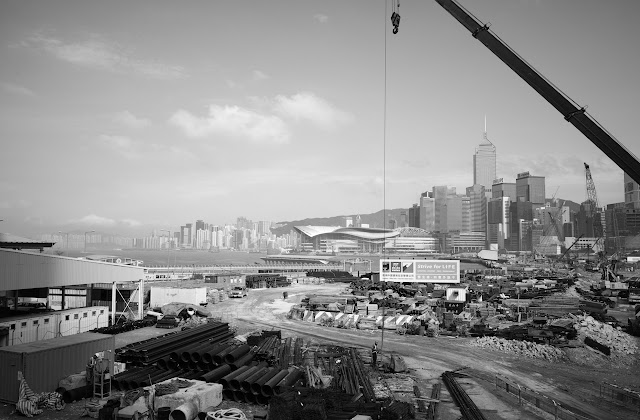
Hong Kong skyline shot over a building site...
M9 color DNG turned regular monochrome with DNGMonochrome... no sharpening or noise reduction...
The shown size here (640 pixels wide) is not the uploaded size. Click on the photo for the full 1280 pixel wide version...
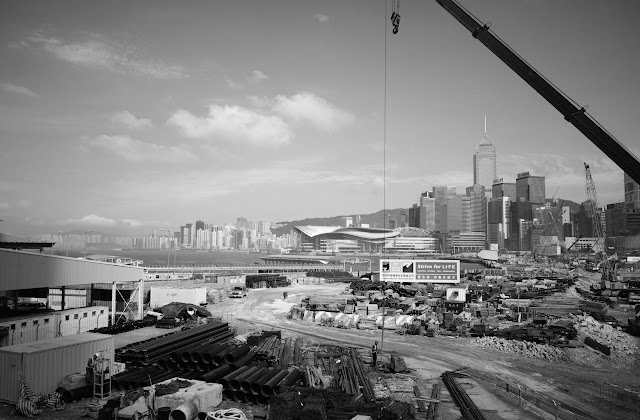
Hong Kong skyline shot over a building site...
M9 color DNG turned red filtered monochrome with DNGMonochrome... no sharpening or noise reduction... the sky turns darker, clouds jump out a bit more and the container in the left bottom corner completely changes 'color', as do numerous other objects in this photo, compared to the regular result...
The shown size here (640 pixels wide) is not the uploaded size. Click on the photo for the full 1280 pixel wide version...
I call it 'a virtual red filter' but I'm assuming a real red filter doesn't totally block green and blue like this method (guessing here, I have not investigated the workings of real red filters out there or what spectrum they cover... I assume you also have a choice there...). Essentially with this method, you're only looking at the full red or full blue result. That can be very interesting I think, but my advise would be if you do use these options: go for the more solid algorithm settings, and inspect the results carefully if you intend to print large.
Almost done
Well folks, I'm almost done... next part will be the conclusion of this series and I'll let you know how long you still have to wait to try this yourself...
... continue with conclusion
... back to part V
Labels:
DNGMonochrome
Subscribe to:
Comments (Atom)






